Day 5: Vienna is more than a Hot Dog!
Main Page
> 2023 Roman da North in
Planes, Trains, and Automobiles ! >
It was another early morning for
Mike and Bone in order for them to make the 8:00 Train from Budapest to the next
site on the Northern border of Pax Romana along the blue Danube, Vienna!
No, not the delicious sausage on a
poppy seed bun with hot peppers, pickle slice, tomata, neon green relish,
mustard, and celery salt! But a city long romanticized for its music, culture,
and the Hapsburgs! En route to train station the Boys learned that you can take
em out of Ann Arbor, but you can never really take the Michigan Wolverines out
of the world!
A Budapest Wolverine!?!
The Boys Uber driver was about 5.10,
and 300 pounds! A typical Michigan Wolverine starting O-Line Guard! Surprising
enough when he saw Bone's Michigan Polo shirt, he lit up and started talking
about how he played American football and LOVED Meechigan!!! It also turned out
that he also knew Zoltan Mesko!
Zoltán Meskó was a Michigan Man and
punter who started for Lloyd Carr in 2006. He was very good at Michigan, in fact
an All-American and was drafted by the New England Patriots in the fifth round
of the 2010 NFL Draft.
Zoltán's was born in Timișoara a
Hungarian minority community in Romania, where he lived with his family in 1989
during the revolutions leading to the fall of communism in the former Eastern
Bloc and the overthrow of Nicolae Ceauşescu. The family was so immersed in the
middle of the crossfire that they often dodged bullets by getting on the floor
in their apartment. Zoltán was just passing through toddlerhood at the time of
the revolution so he does not remember much of the details, but the family
stuffed windows with pillows during the conflict. At the age of twelve, he
immigrated with his family to Ohio and Meskó was introduced to American football
when he was spotted as a potential kicker in eighth grade gym class when he
knocked out a light during a kickball game. As an Hungarian by birth, he spends
time every summer in Budapest, and invests his time and money on an American
Football youth organization. Definitely an Michigan Man paying it forward!!!
After a delightful conversation about the Wolverines and their chance in 2023,
Mike and Bone bid adieu to their new Wolverine friend and boarded train with out
incidence with 10 minutes to go!
Shortly Mike and Bone were on a
much, (much) better train than the Trains from Split to Budapest. Air
conditioning, coffee, water were all available for the two hour drive.
Starting the Day at Budapest Train Station
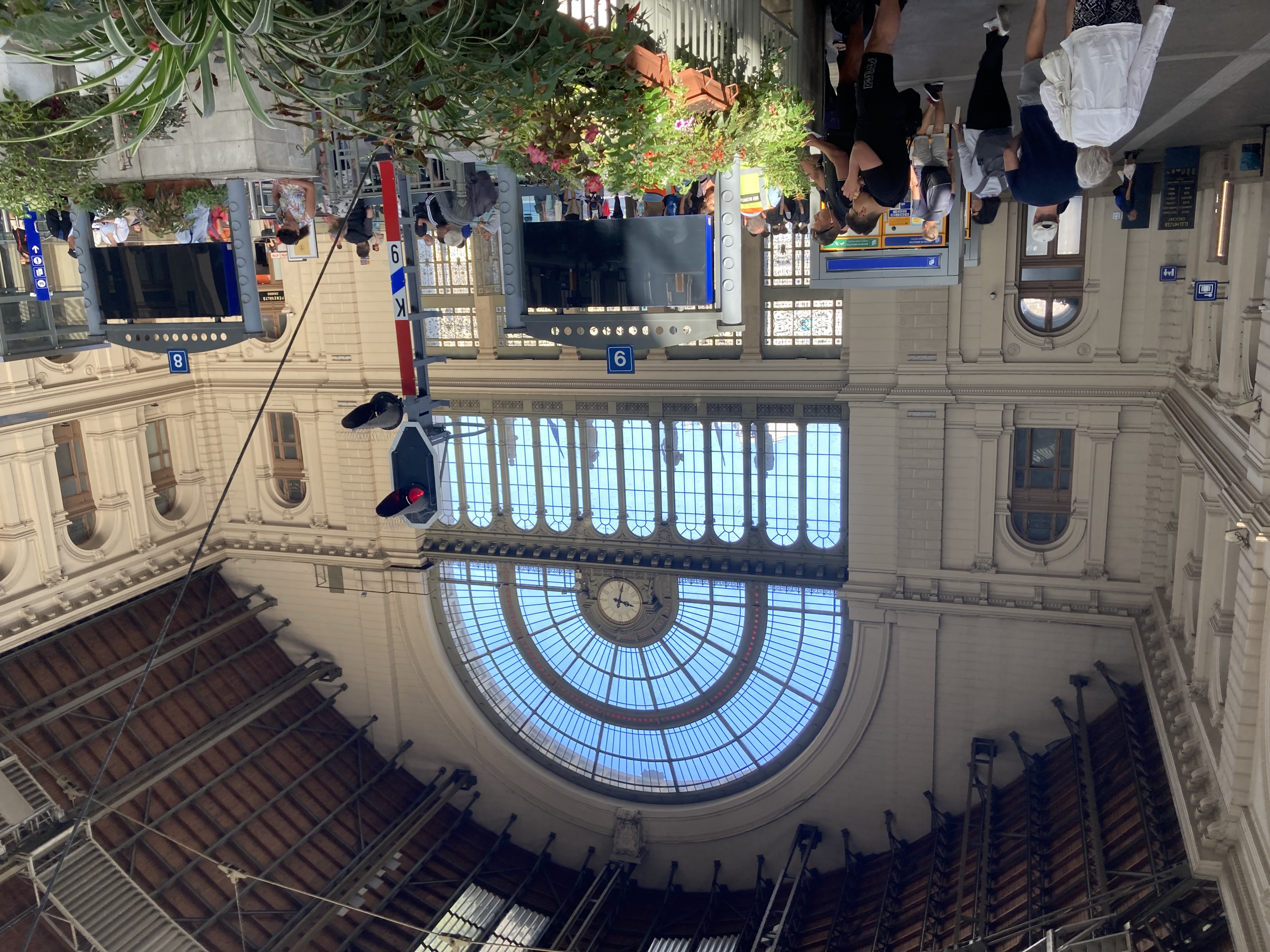
Cruisin' the Blue Danube!
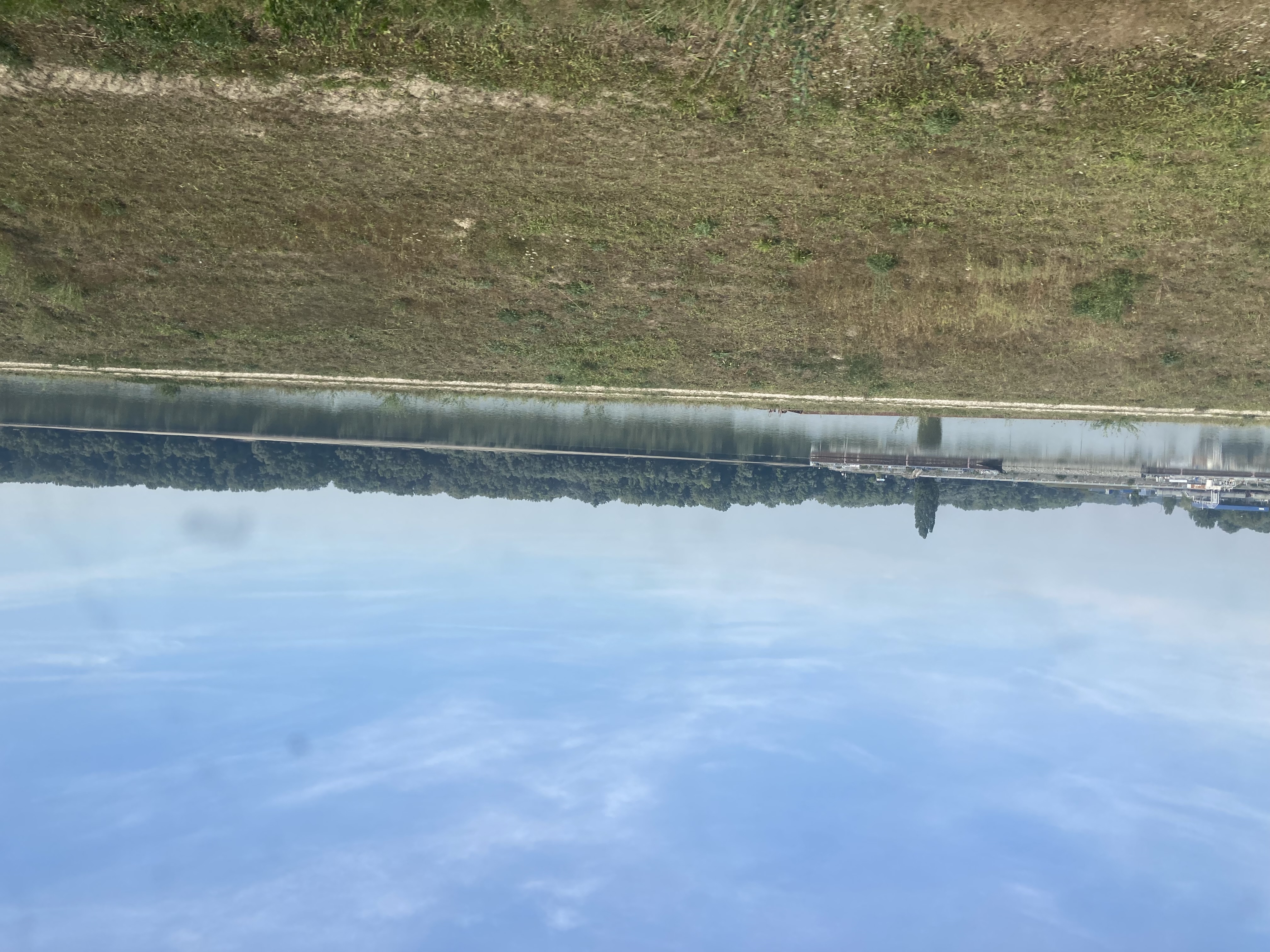
This train that took Mike and Bone
from Budapest to Vienna was a more typical Eurotrain experience than the
Soviet-era locomotives that took them from Split to Budapest. These training
provided air conditioning, coffee, water were all available for the two hour
ride to Vienna. The train essential gave Mike and Bone a really good view of the
"ground" that the Romans had to defend!
After a very comfortable train
ride, the Boys entered the fabled city of Vienna!
Vienna, the Capital of the Holy
Roman Empire and the Austria-Hungarian Empire! The Renaissance berg that gave
Europe the Hapsburgs, Mozart, Beethoven and many more! While this rivals
London, Paris, Rome, it was not as important in Roman times and it was to become
in the middle ages and the renaissance. It was however a border fort for which
the modern city started.
Unfortunately, it success makes it a crazy
expensive place to visit, and the Boys being the Boys went for the cheaper
sleeps. So it took about 40 minutes to get to their AirBNB, and then for the
second time this trip, it took a bit of shenanigans to get into their Hotel!
The code to get to the key didn't work, so after a phone call where the manager
told be boys to wait for the cleaner who would be there soon, left the Boys in
an ally with all their gear! After another 10
tense minutes the cleaner showed up and took the Boys through a very weird maze
of a lift in one of the strangest buildings they had ever seen! Fortunately the
Apartment was nice and after dropping their gear, the Boys set out
to head to Central Vienna to find Roman Vienna, originally known as Vindobona!
What the Boys were Looking For
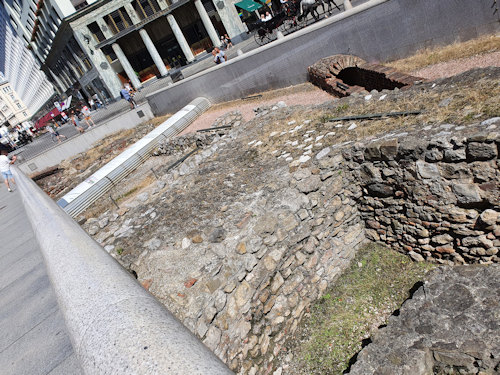
Heading into the center of Vienna,
Bone showed Mike a picture (shown above) planned their visit to the Roman
remains of Vindobona, that were somewhere in the famous Hoher Market. Their Uber
driver dropped them off right in the of the Square, right by two of its icons!
Mike and Bone in the Famous Hoher Market in Vienna!
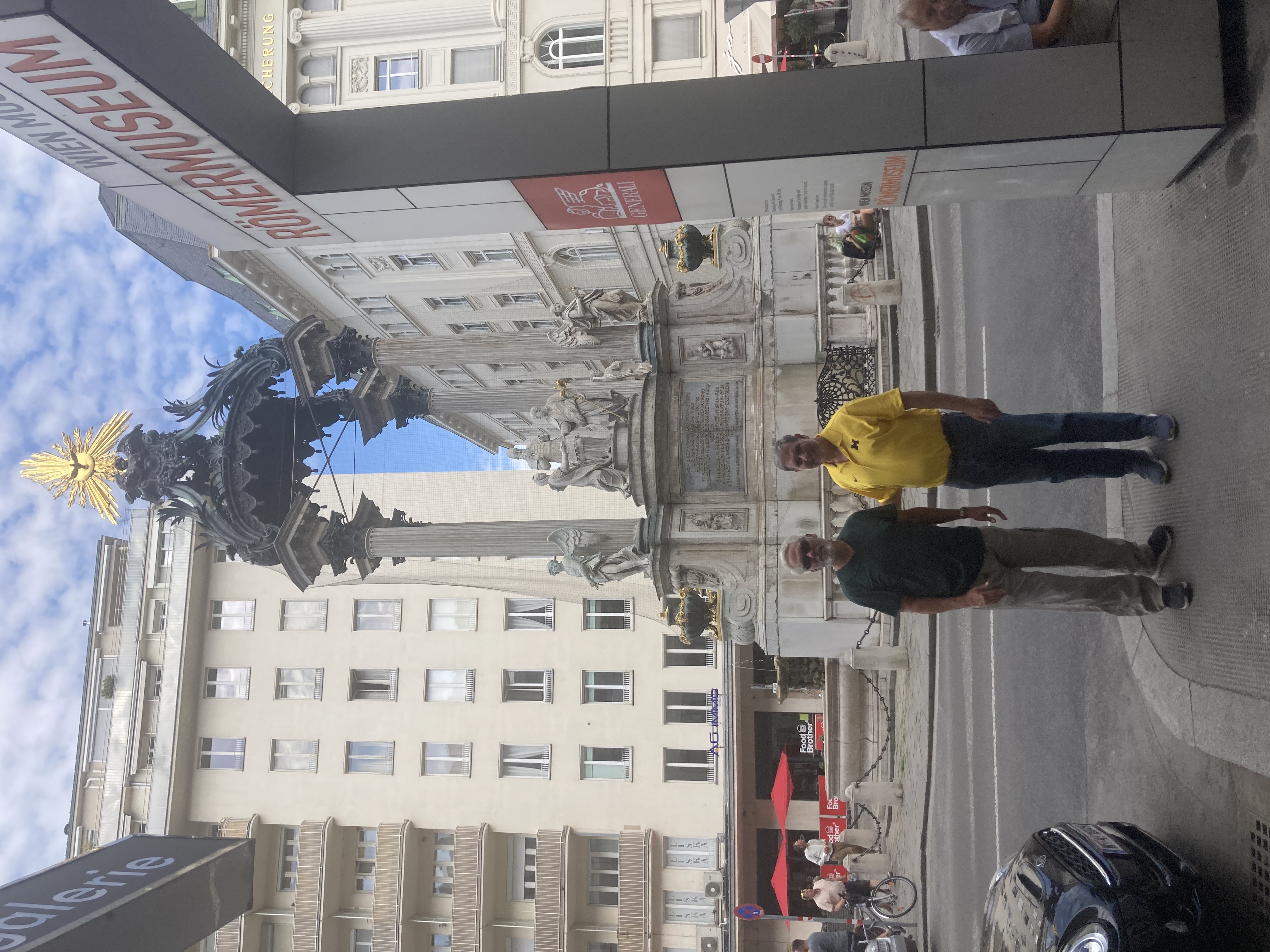
Hoher Market is the oldest square in
Vienna. At its center stands a sculpted fountain, but the biggest tourist draw
is the Ankeruhr, a large gilded clock designed in 1914. During the Middle Ages,
this was one of the city’s most important marketplaces. It was also the site of
a pillory and gallows. There are no traces left of the past, as it is now a
parking lot lined with post-war buildings.
The Vermählungsbrunnen or Wedding
Fountain was commissioned by Emperor Leopold I who wanted to celebrate the
return of his son Joseph from the siege of Landau. Hence, the fountain is also
known as the Josefsbrunnen.
The monumental fountain was designed
by the court architect, Johann Bernhard Fischer von Erlach and constructed from
1729 to 1732 by his son, Joseph Emanuel. The Baroque fountain depicts the
supposed marriage between Joseph and Mary by the High Priest under a bronze
baldachin, supported by four large Corinthian columns.
The Ankeruhr! (Anker Clock)
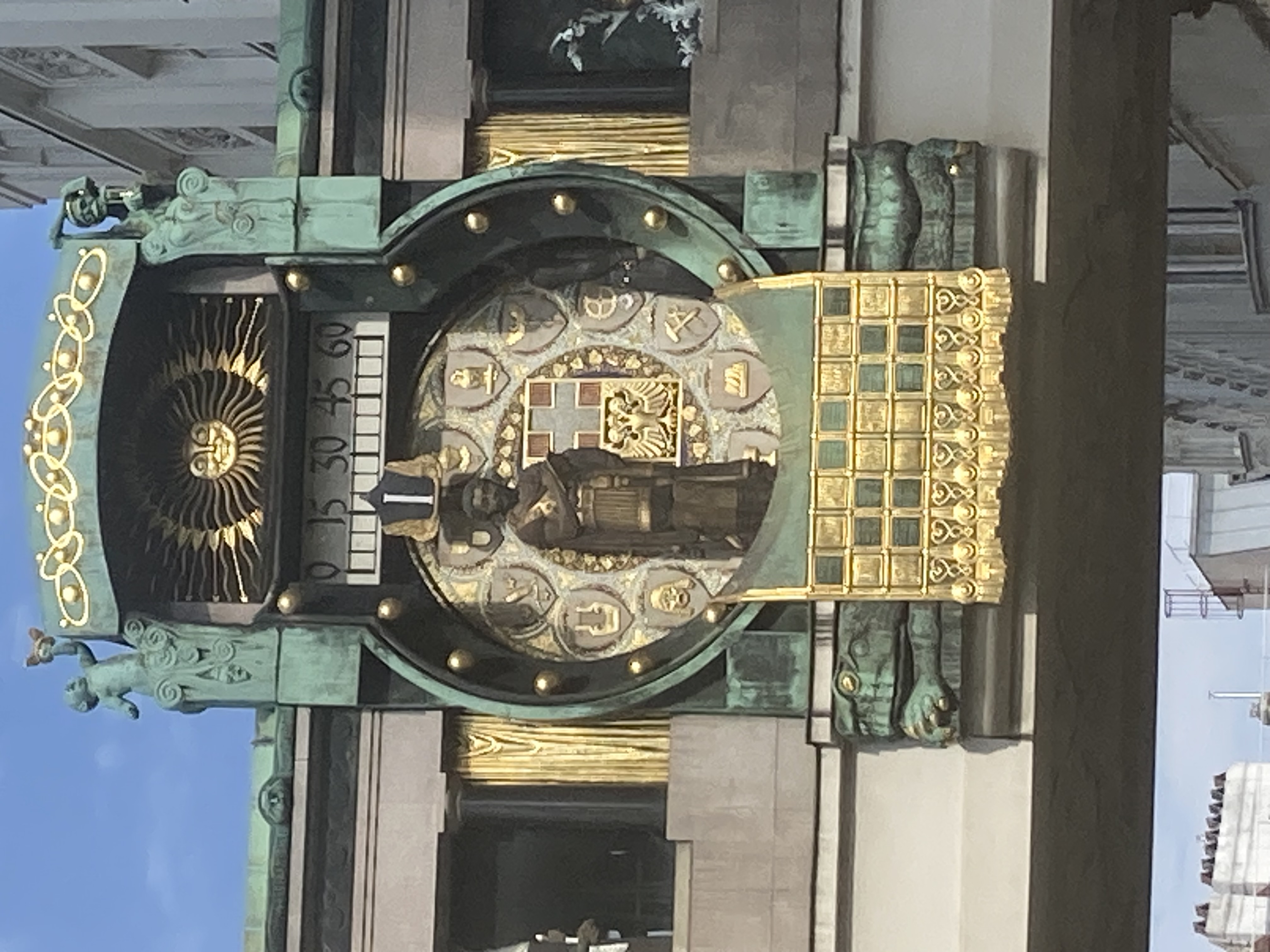
At noon every day, as for the past
100 years, the Anker Clock chimes in the Hoher Markt – the oldest square in
Vienna – and presents 12 figures from history with background music, and as it
struck 1:00PM, Mike and Bone started to walk around looking for a very large
underground enclosure housing Roman Vindobona!
The Boys Searching for Vindobona in the Hoher Market!
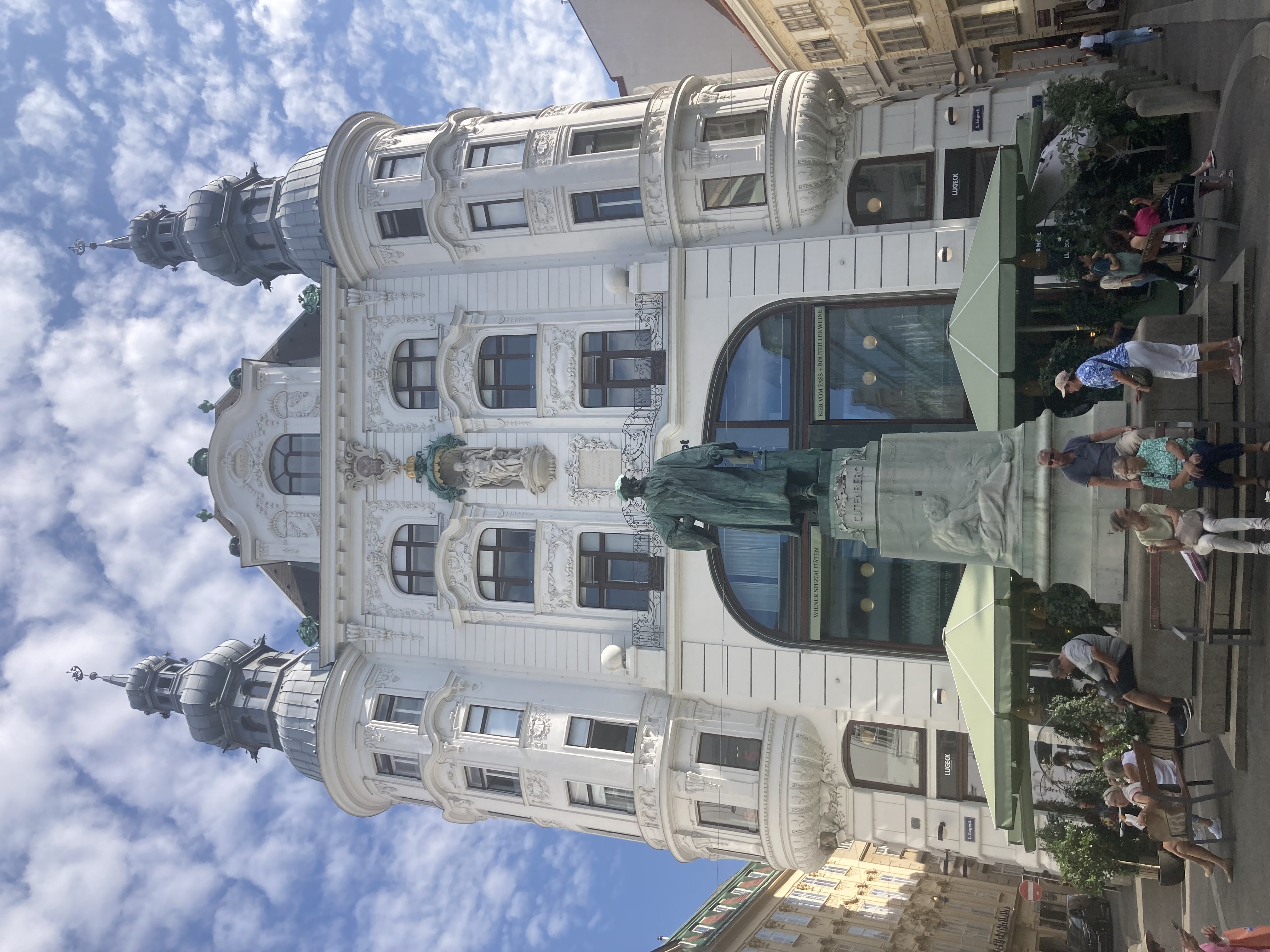
The Hoher Market is a very cool
place, but try as they might Google Maps was simply not helping them find the
Roman Museum! And every time they asked someone, they we tell the Boys "it is
only two blocks further!" After an hour of walking around they were about to
give up when they realized they would never find that big hole in the ground
when they finally, and actually circled to the very spot to where the Uber
driver dropped them off an hour before..... Now look at the picture again!
"D-OHHH!!!" Homer Simpson
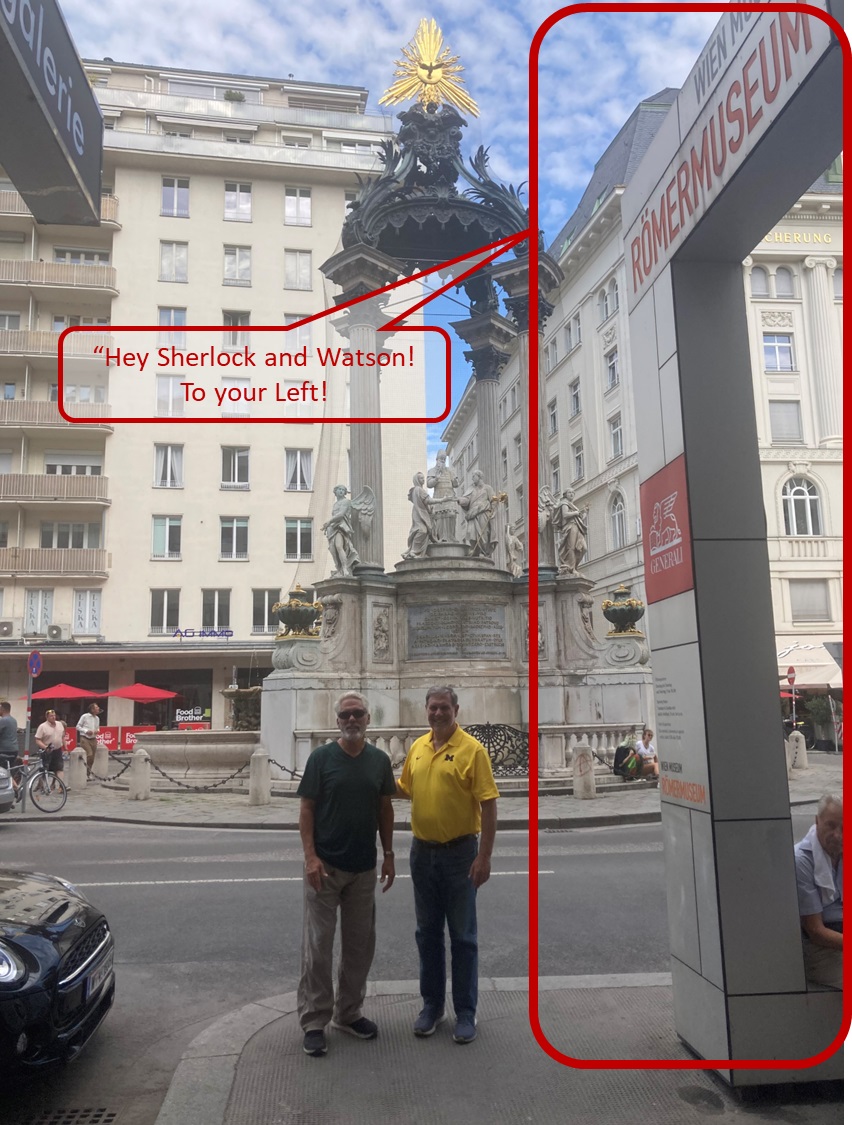
The befuddled Boys were
literally dropped off right at the
Museum's Entrance!!!! Obviously, the picture that Bone saw from the
interweb was really old!
With no further ado but the sweat of wandering around for an hour on a hot day,
Mike and Bone finally plumbed the depths of Roman Vienna, better known in the
day as Vindobona!!
The Roaming the Römermuseum !

And plumb the depths they did! The
first think that Mike and Bone painfully figured out is that the remains of
Roman Vindobona lie beneath Vienna. Especially since they just spent a better
part of an hour walking on top of it! It’s quite another to grasp just how much
of “Vindobona” is under the modern day Vienna!
The Imprint of Vindobona on Modern Day Vienna
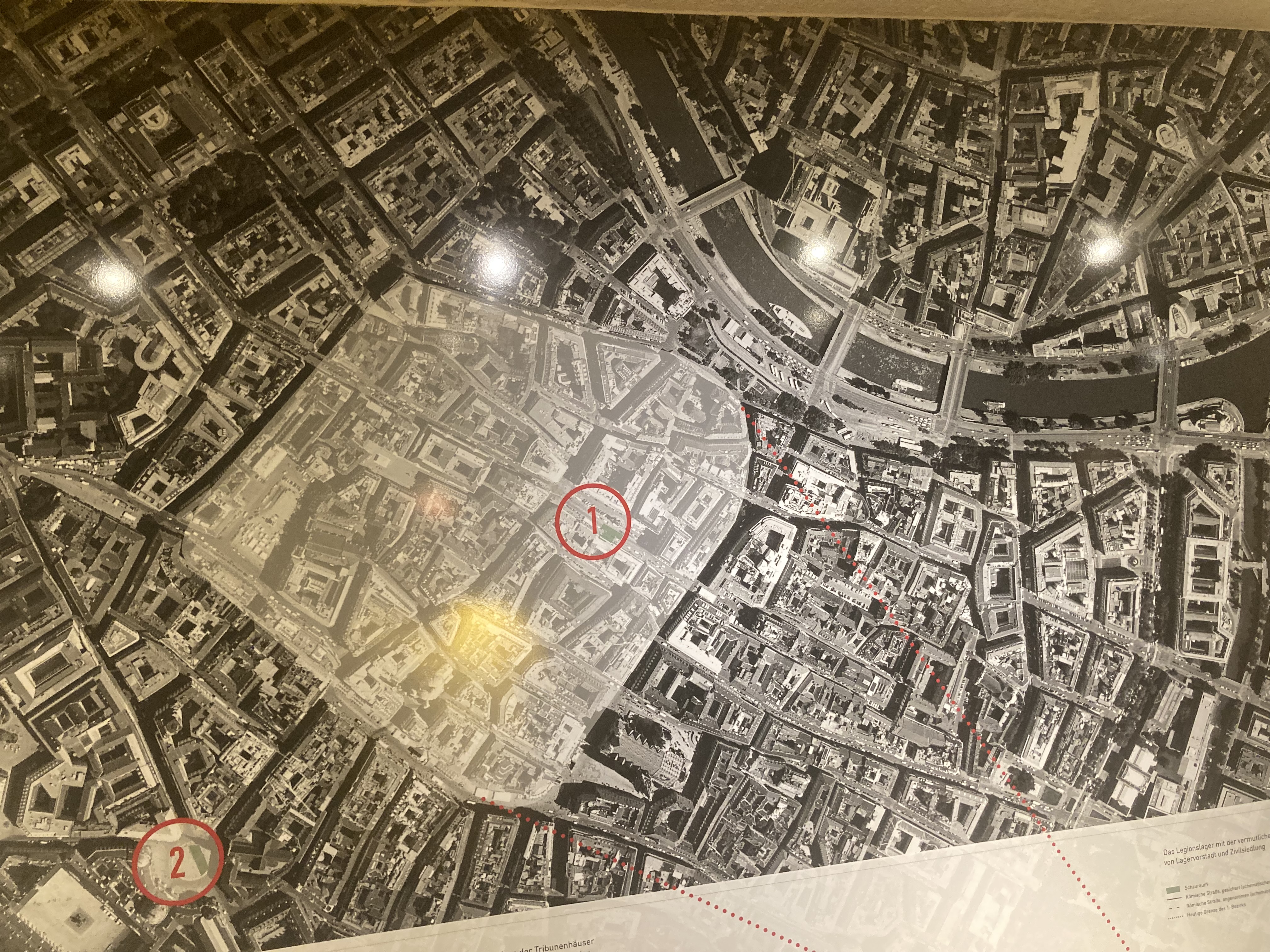
Mike and Bone discovered just how
much is underground as in the entrance is a giant map that shows the extent of
the Roman presence compared to today’s Vienna.
The military camp that became
Vindobona was founded in the year 97 A.D. to protect the northern border of the
Roman Empire. At Vindobona's peak, over 30,000 people lived in the confines of
the present-day city – a mix of indigenous people and immigrants from all parts
of the Roman Empire. As the exhibition shows, everyday life was thoroughly
comfortable. There were covered sidewalks, canals, clean water, taverns, thermal
baths, theaters, and shops.
At the fortress alone housed 6000
soldiers and headquartered the Twins’ Tenth Legion (Legio X Gemina) for many
decades. Being one of the Roman Danube Border defenses it was not has important
as Aquincum, but it was much closer to the action with the troublesome German
tribes. Despite its small footprint the site is on the UNESCO’s World Heritage
List.
One of the best examples of Roman
engineering is prominently on display in the Museum!
Plumbing the Ancient City of Vindobona!
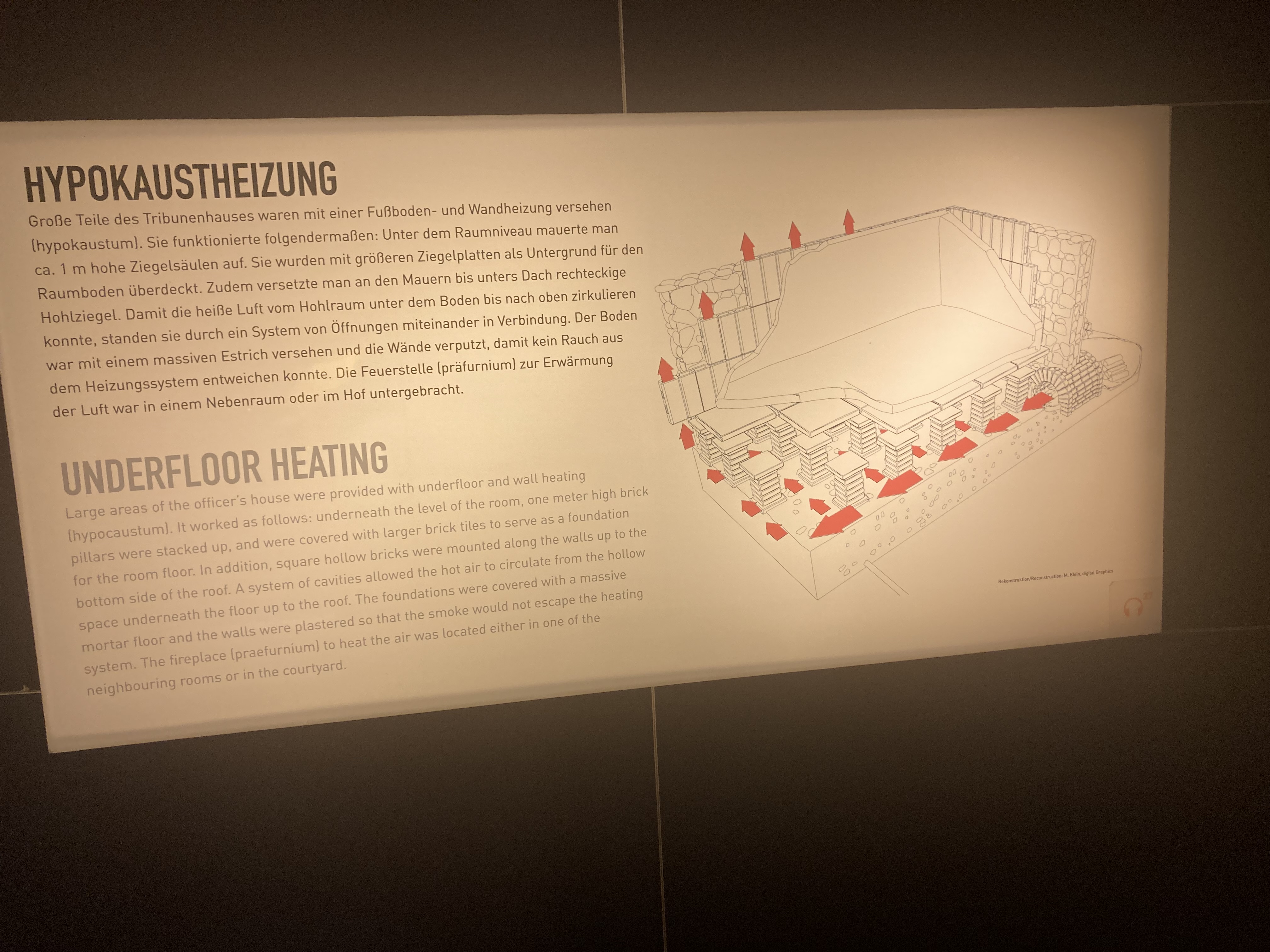
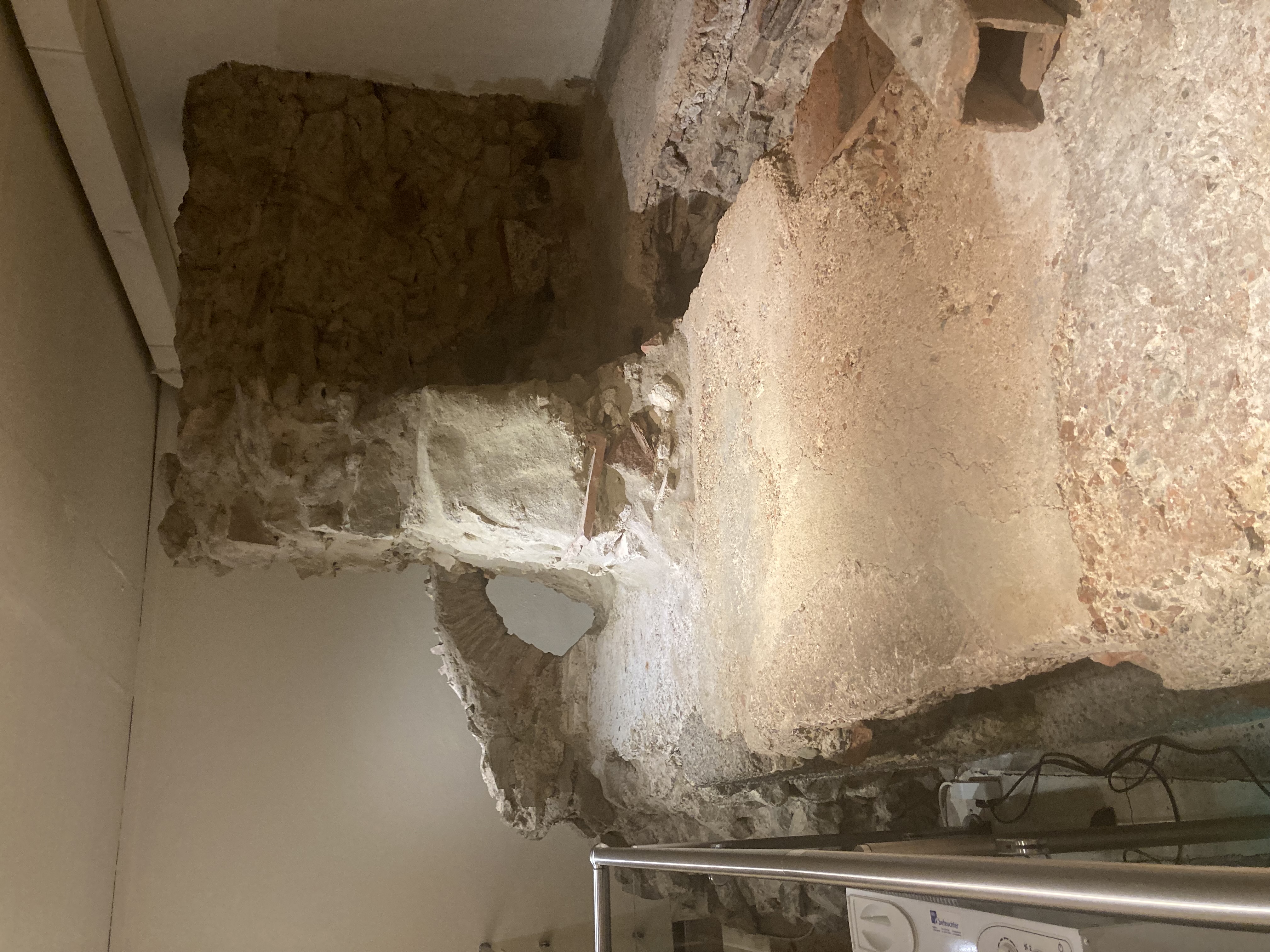
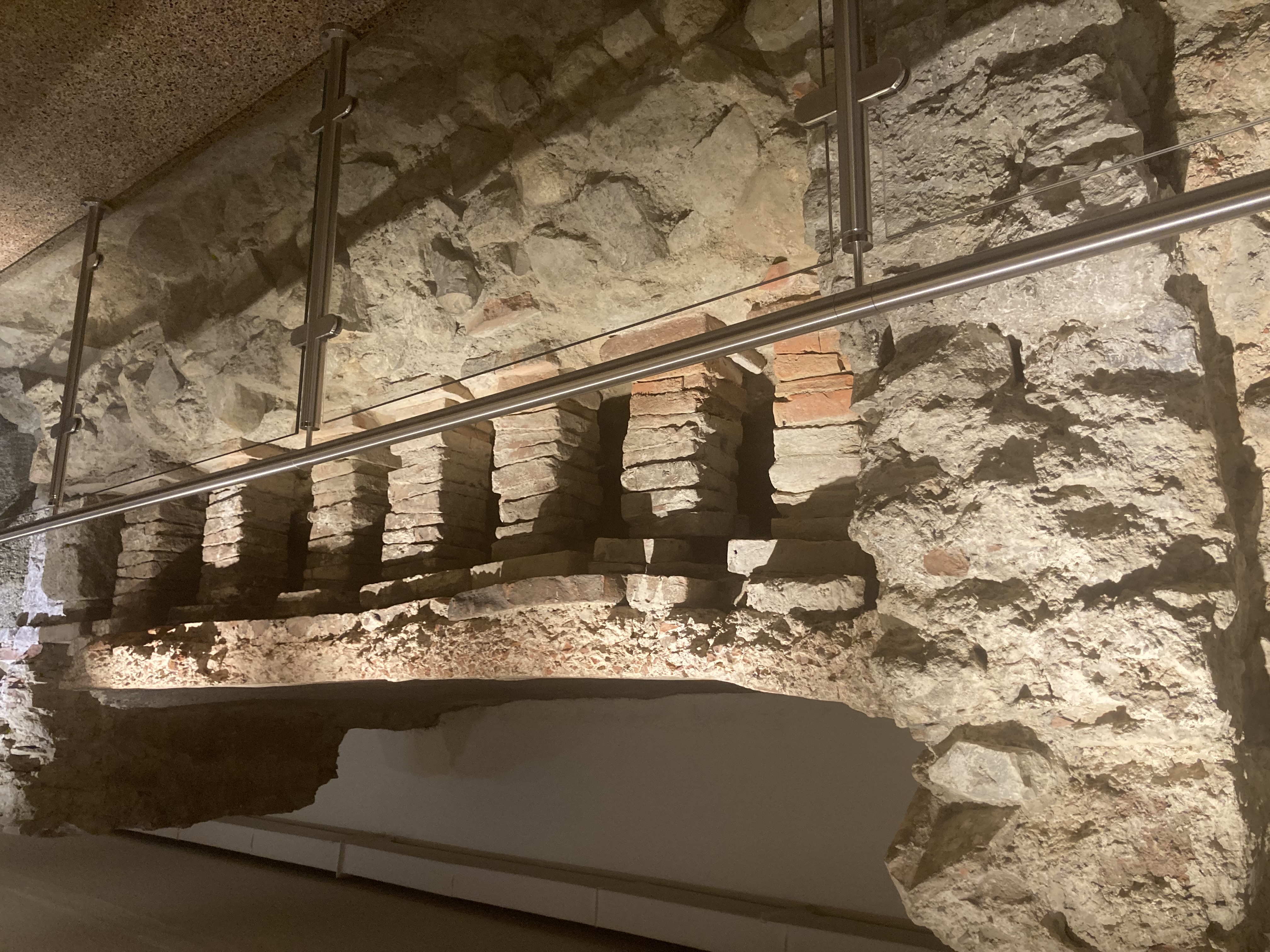
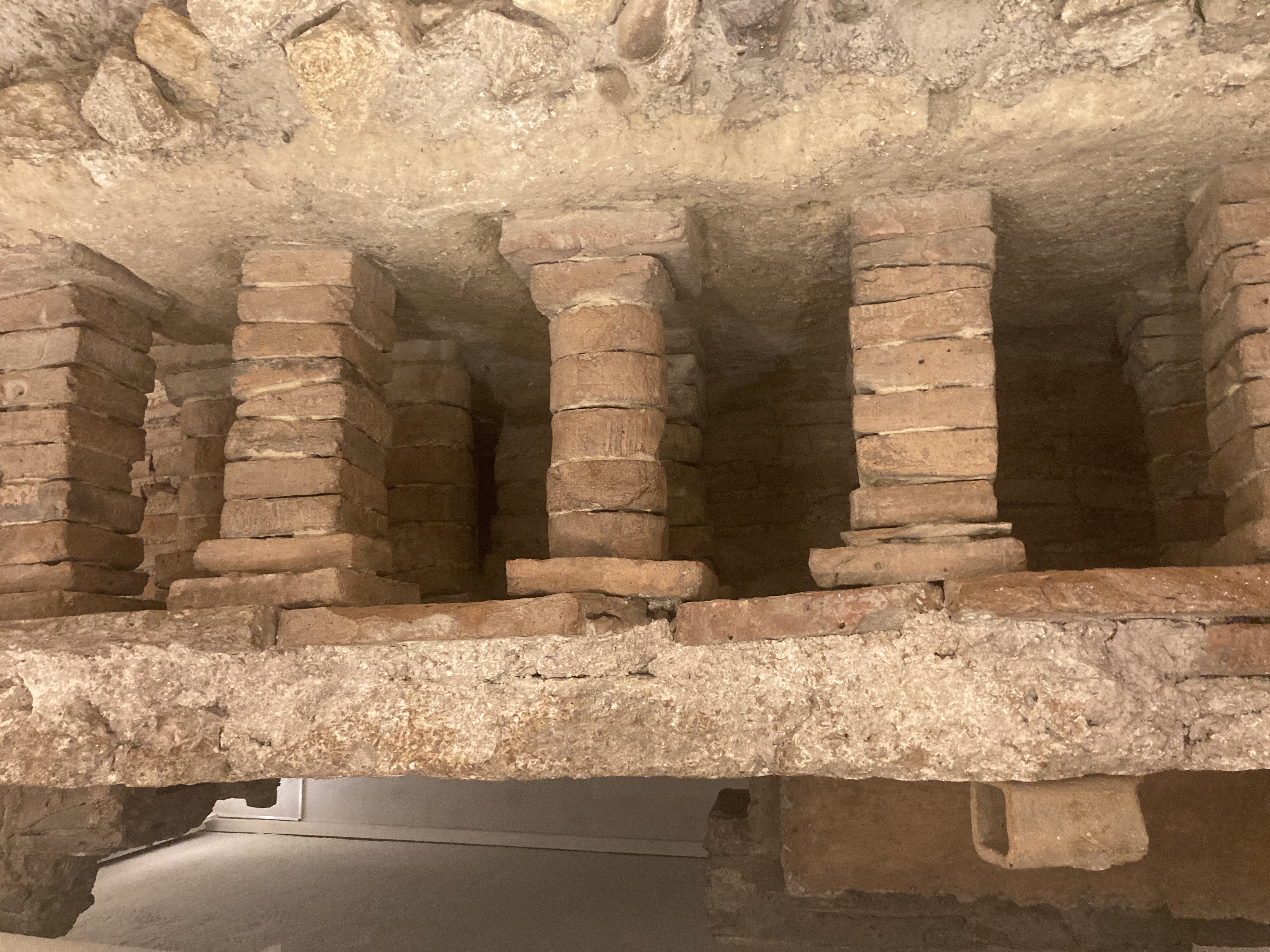
Literally below the street above one
of the best-preserved Roman ruins in Vienna. Mike and Bone viewed a the
remnants of a home that belonged to a Roman officer and his family. There are
also great examples of the fire and vent systems used to heat Roman villas.
Roman Finds under Vienna!
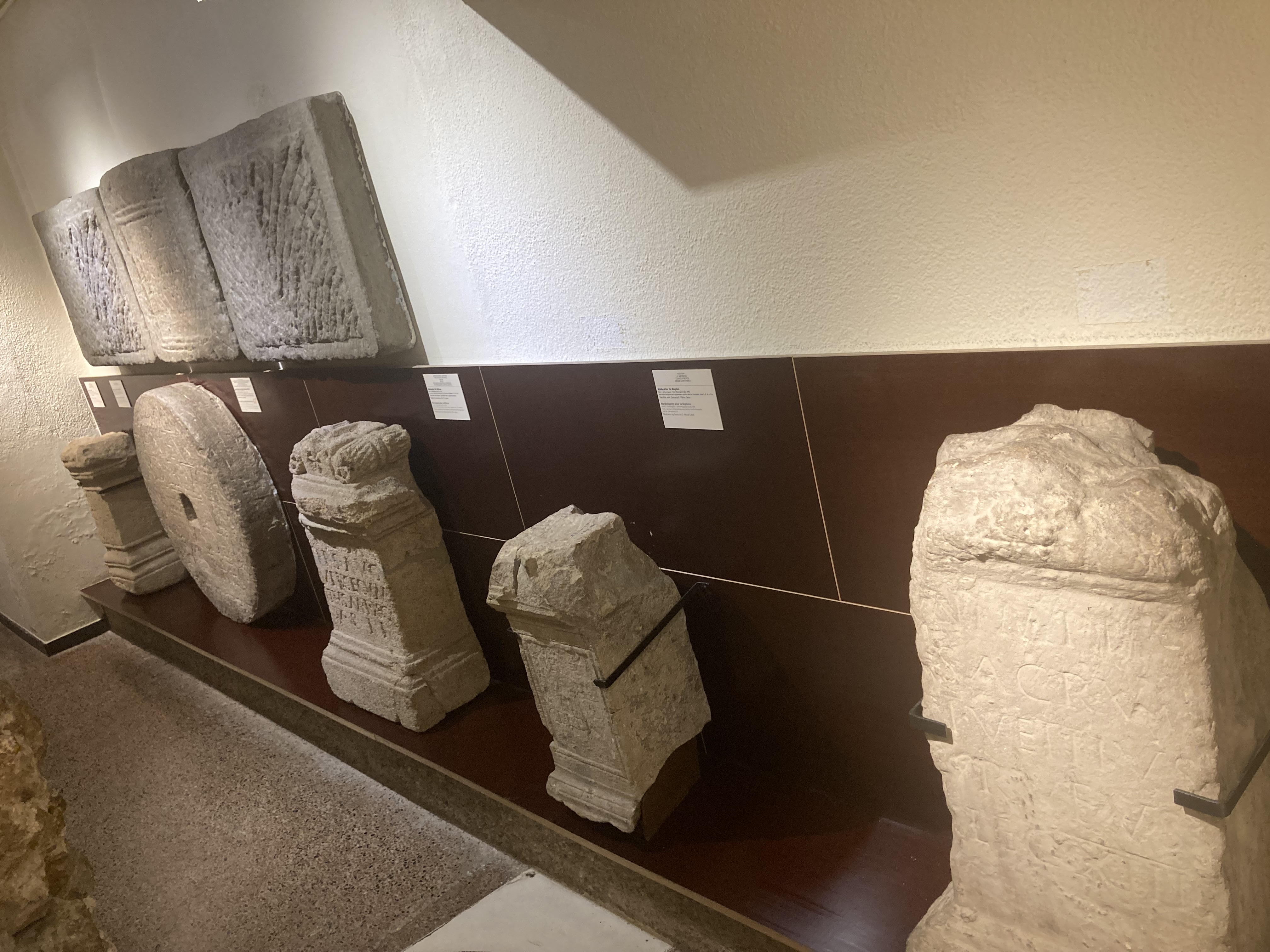
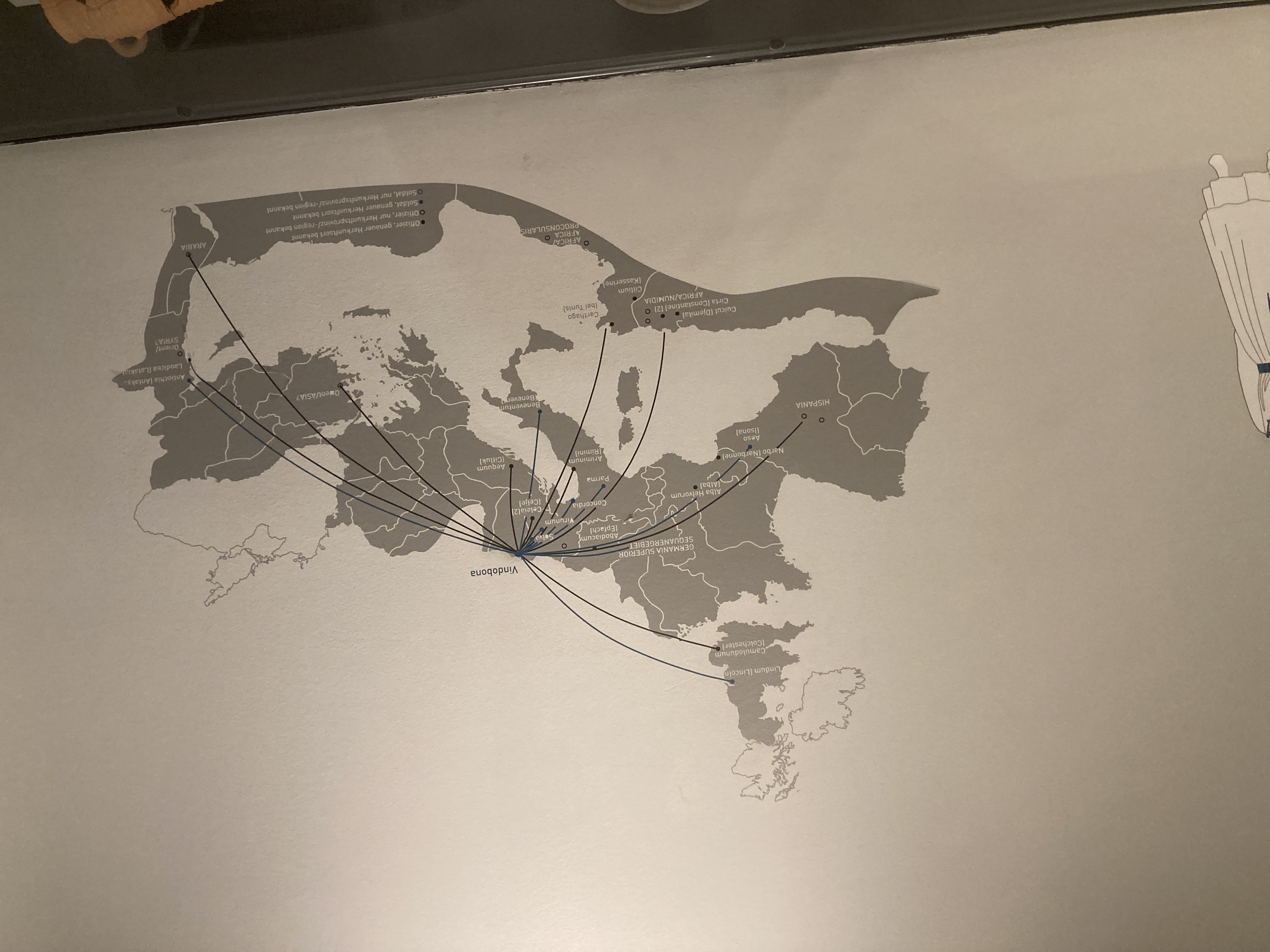
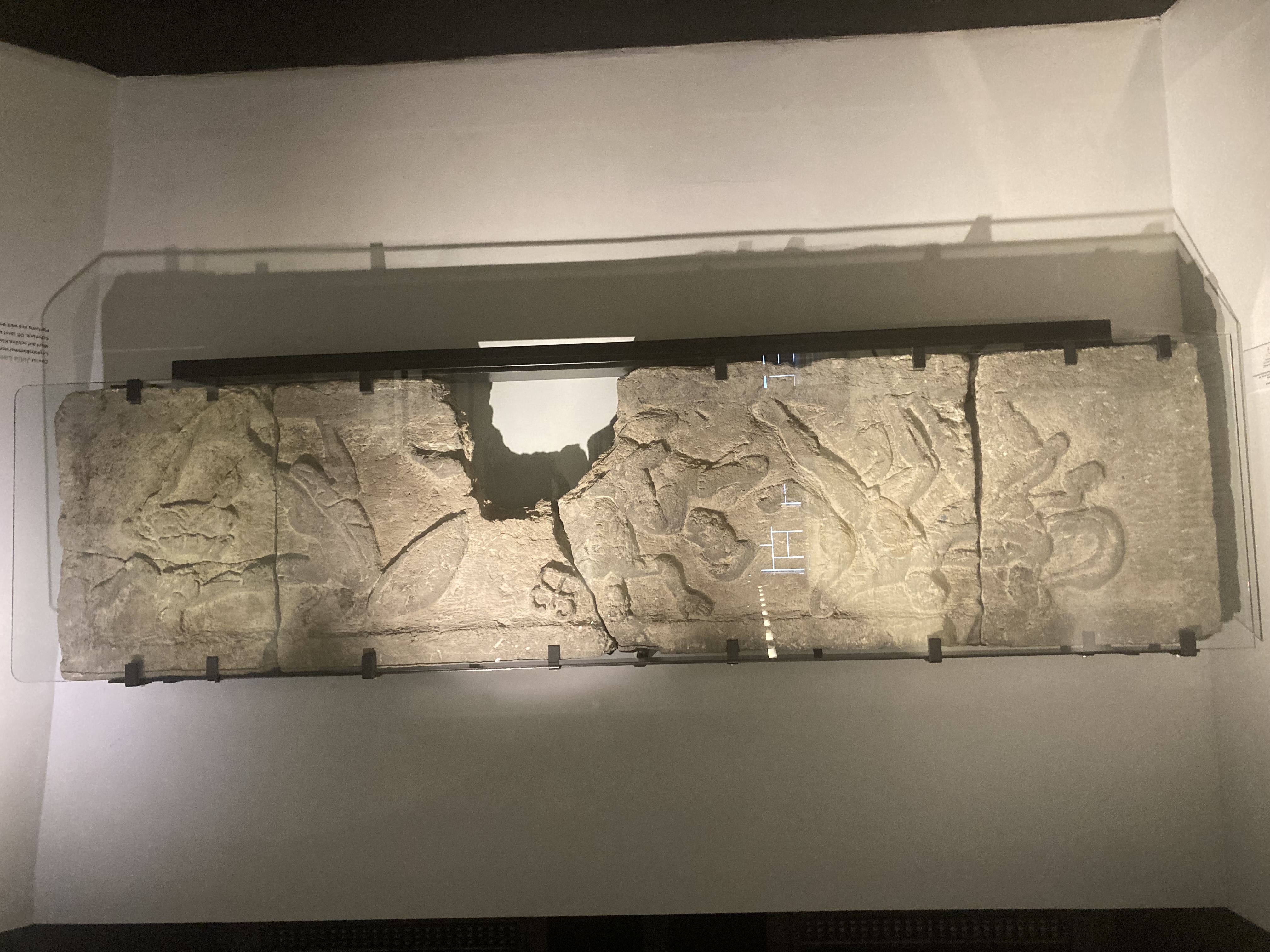
Mike and Bone quickly figured out
that the Roman Officers home is the central attraction of the Museum. The rest
of the small Museum are a few relics from excavations and digs that add
authenticity to the displays. More to the point, the museum makes it clear just
how large and developed Vindobona was in its day.
This realization brought out a tinge
of regret in the Boys that it all disappeared under the boot of the dark ages, with centuries it took for us to begin to recapture the same level of
civilization in Vienna. After about 20 minutes more, Mike and Bone had checked
off the tiny museum, that celebrated Vindobona, that border town in the Northern Roman Empire.
After the train ride from Budapest, finding their AirBnB, it was pushing 3:00
and Mike
and Bone were starved, time for lunch!!
Scoping St. Stephens Cathedral!
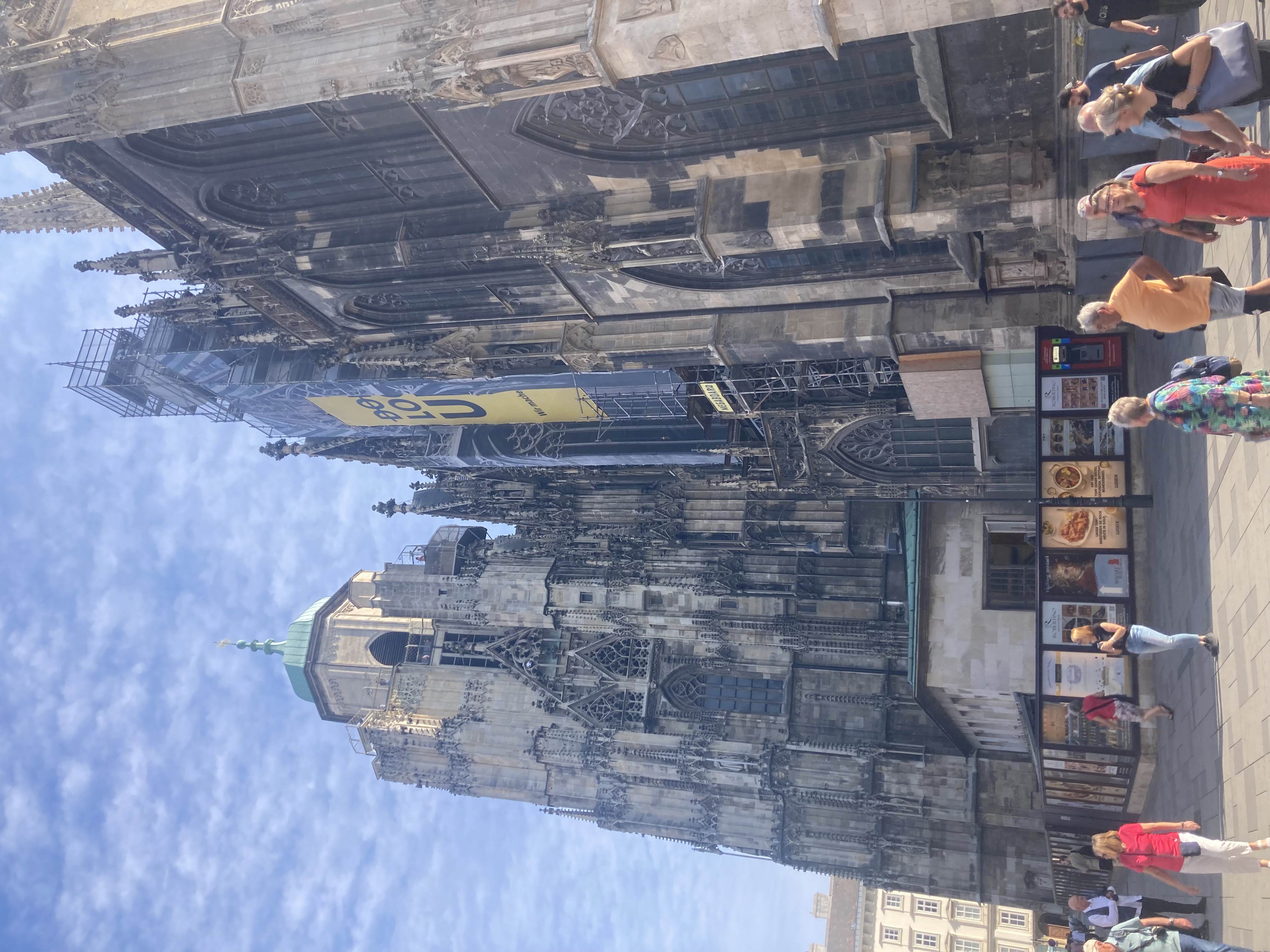
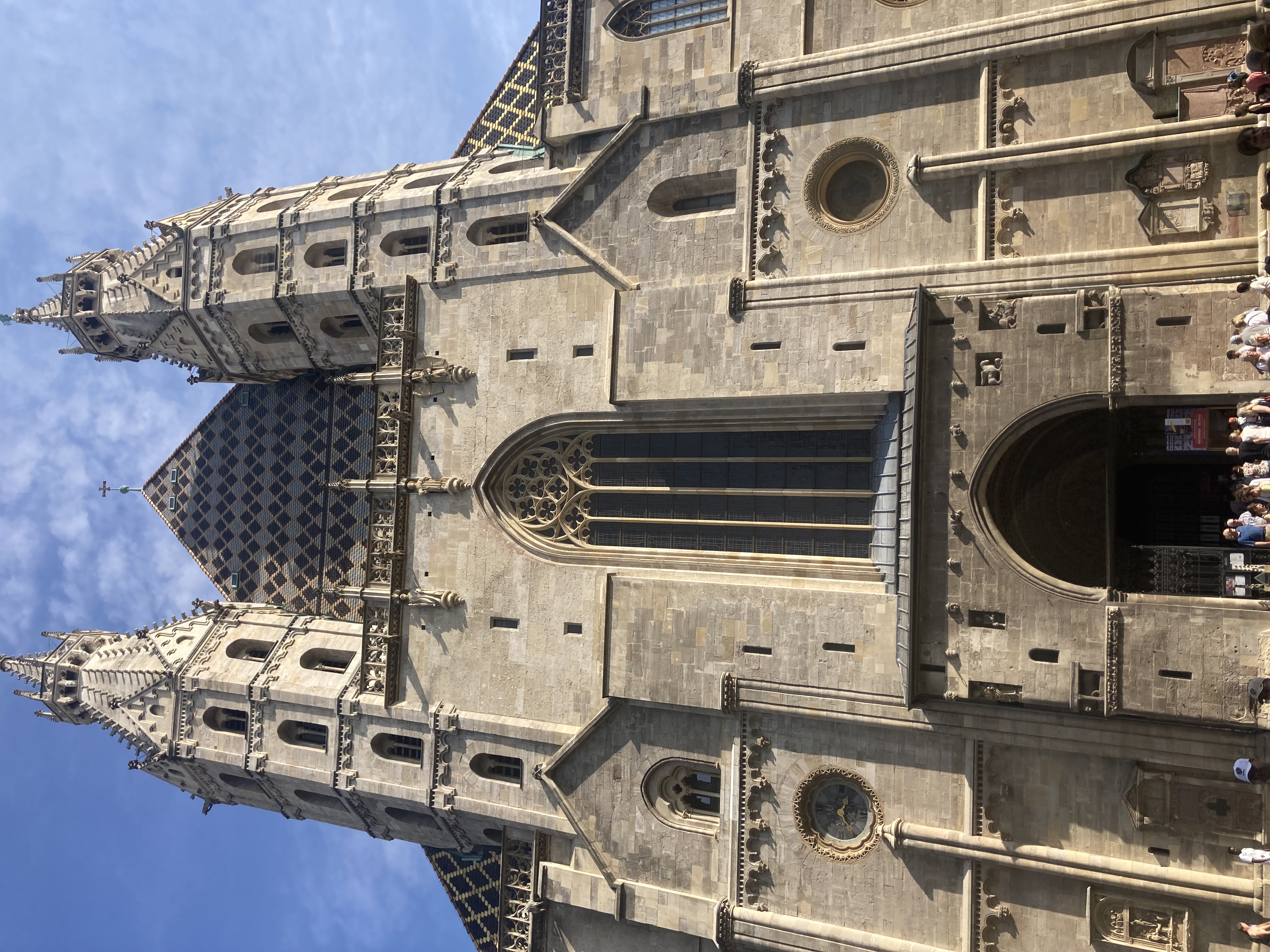

Surfacing back on the Street, Mike
and Bone scurried like rodents in the bright hot late summer afternoon. In the
center of the Hoher Market is the iconic St. Stephen's Cathedral. St. Stephen's
Cathedral is the headquarters of the Roman Catholic Archdiocese of Vienna and
the seat of the Archbishop of Vienna. The current Romanesque and Gothic form of
the cathedral, seen today in the Stephansplatz, was largely initiated by Duke
Rudolf IV (1339–1365) and stands on the ruins of two earlier churches, the first
a parish church consecrated in 1147. The most important religious building in
Vienna, St. Stephen's Cathedral has borne witness to many important events in
Habsburg and Austrian history and has, with its multi-colored tile roof, become
one of the city's most recognizable symbols.
By the middle of the 12th century,
Vienna had become an important center of German civilization, and the four
existing churches, including only one parish church, no longer met the town's
religious needs. In 1137, Bishop of Passau Reginmar and Margrave Leopold IV
signed the Treaty of Mautern, which referred to Vienna as a civitas for the
first time and transferred St. Peter's Church to the Diocese of Passau. Under
the treaty, Margrave Leopold IV also received from the bishop extended stretches
of land beyond the city walls, with the notable exception of the territory
allocated for the new parish church, which would eventually become St. Stephen's
Cathedral. Although previously believed built in an open field outside the city
walls, the new parish church was in actuality likely built on an ancient
cemetery dating to Ancient Roman times; excavations for a heating system in 2000
revealed graves 8.2 feet below the surface, which were carbon-dated to the 4th
century. Mike and Bone didn't want to pay to tour it, but it definitely
helped as a visual "anchor" for the Boys to know where they were at any time
based where they were in context of St. Stephens! The Boys didn't need spiritual
food, they needed actual victuals!
The Amazing Vienna Street Scene
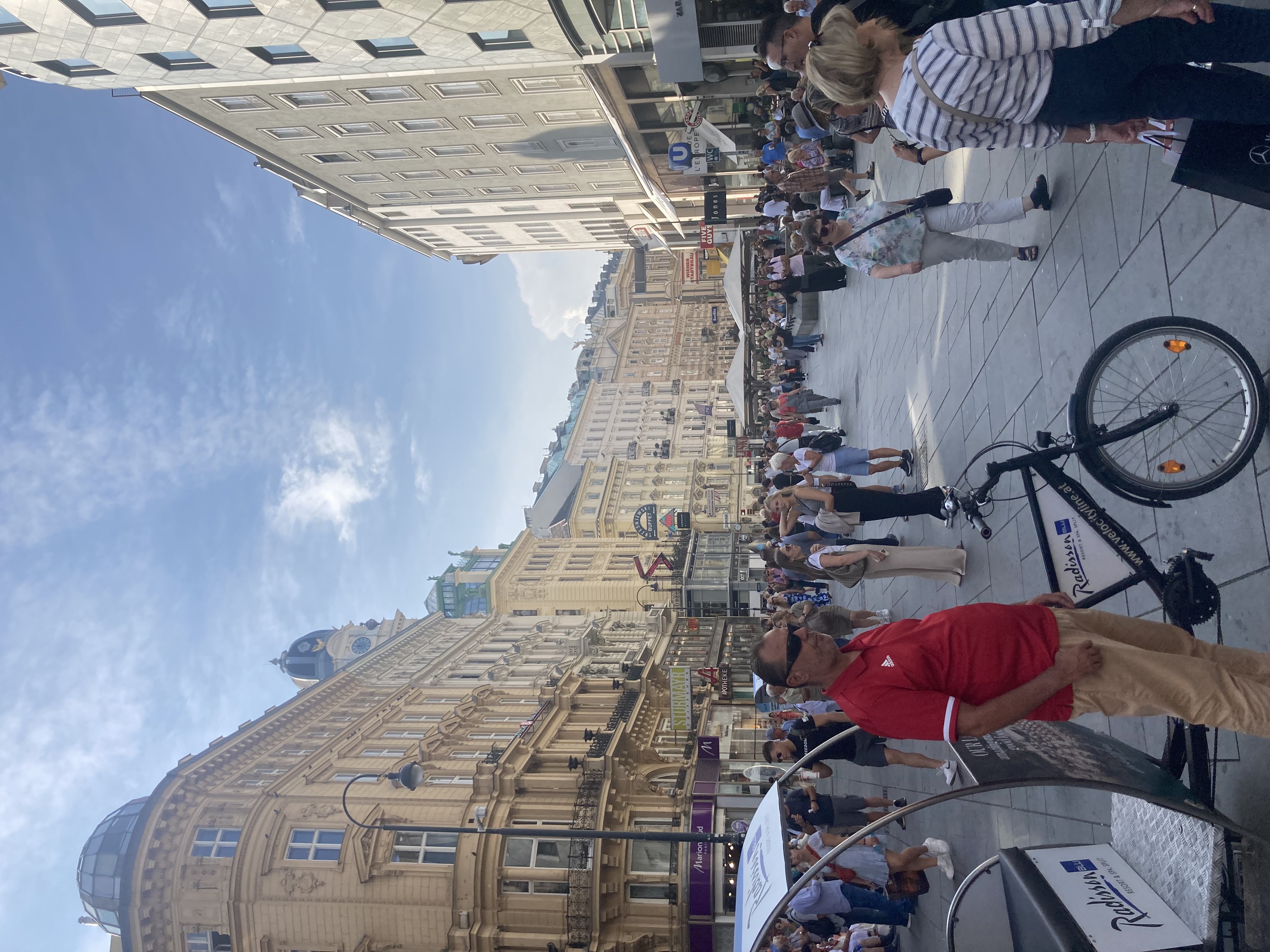
Wandering around looking for lunch,
Mike and Bone marveled at one of Europe's absolute gems. Vienna is every bit as
iconic as Paris, and twice as clean! The wandering and wonder paid the Boys
dividends,, before their watering eyes was manna from heaven for Mike and Bone!
Hot Dogs!!!!
Hot Dog! These are great Brats!!
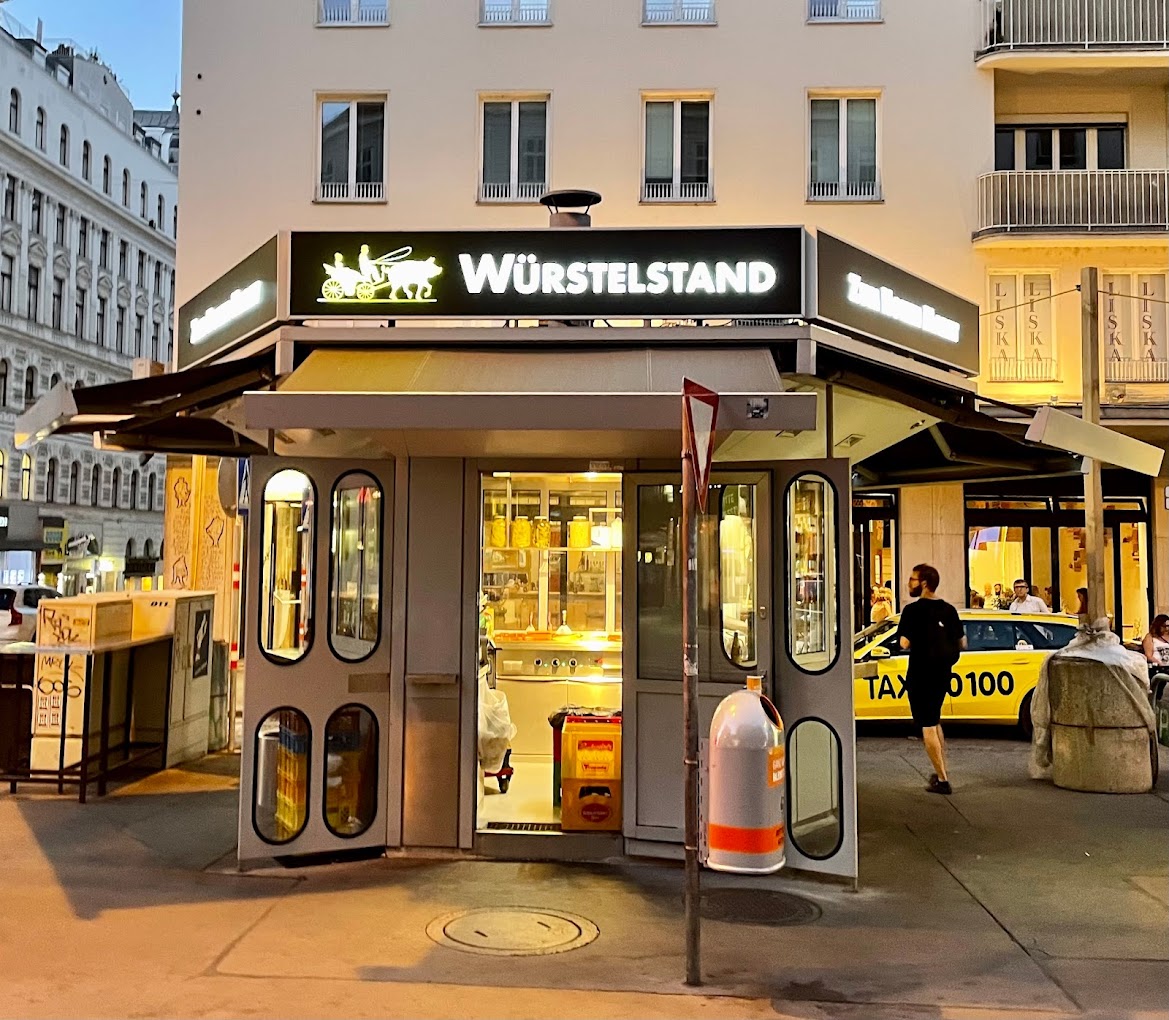
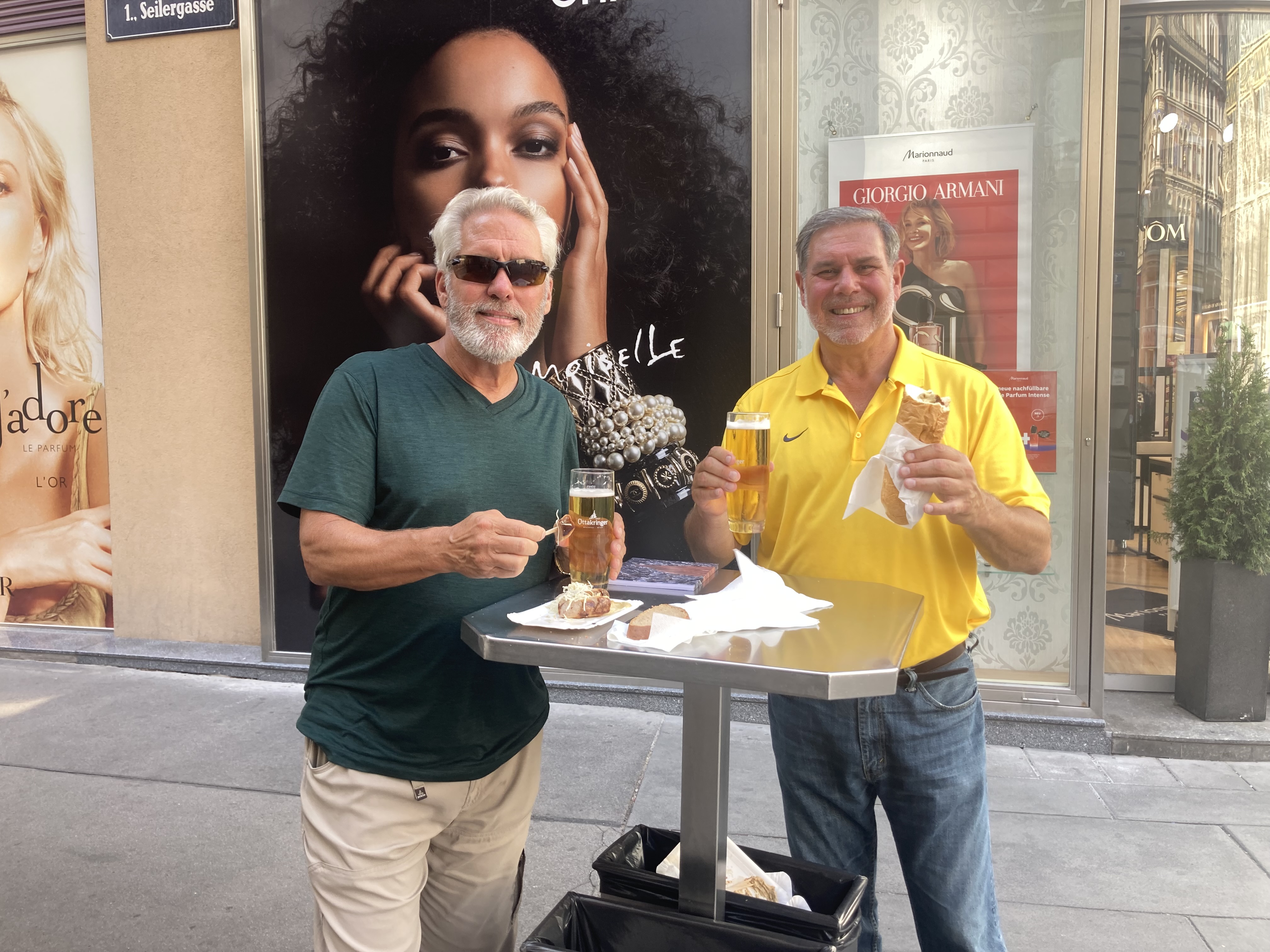
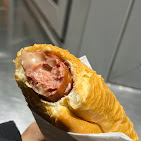
The history of the hot dog has many
origin “stories” One story is that a German immigrant sold them, along with milk
rolls and sauerkraut, from a push cart in New York City's Bowery during the
1860's. In 1871, Charles Feltman, a German baker opened up the first Coney
Island hot dog stand selling 3,684 dachshund sausages in a milk roll during his
first year in business! Another is that in 1893 ahead of the Columbian
Exposition. Samuel Ladany and Emil Reichl, two Jewish immigrants from
Austria-Hungary, started selling their all-beef, spiced dogs from a stand during
the fair and used the proceeds to open the Vienna Beef company. So in only
made sense, for Mike and Bone try out the Würstelstand am Hohen Markt! So
the Boys order two of their best bratwursts, stuffed in this ridiculous chewy bun
with a coupla of ice cold Gosser Beers, and voila! Mike and Bone were in Dogasm!
There really ain't no better way to be in a market square in Vienna in a busy
afternoon than with a dog and beer!
After an awesome lunch, Mike and
Bone had rest of the afternoon to wander around the "City of Dream"!
The Pest Column: Many Monuments of Vienna
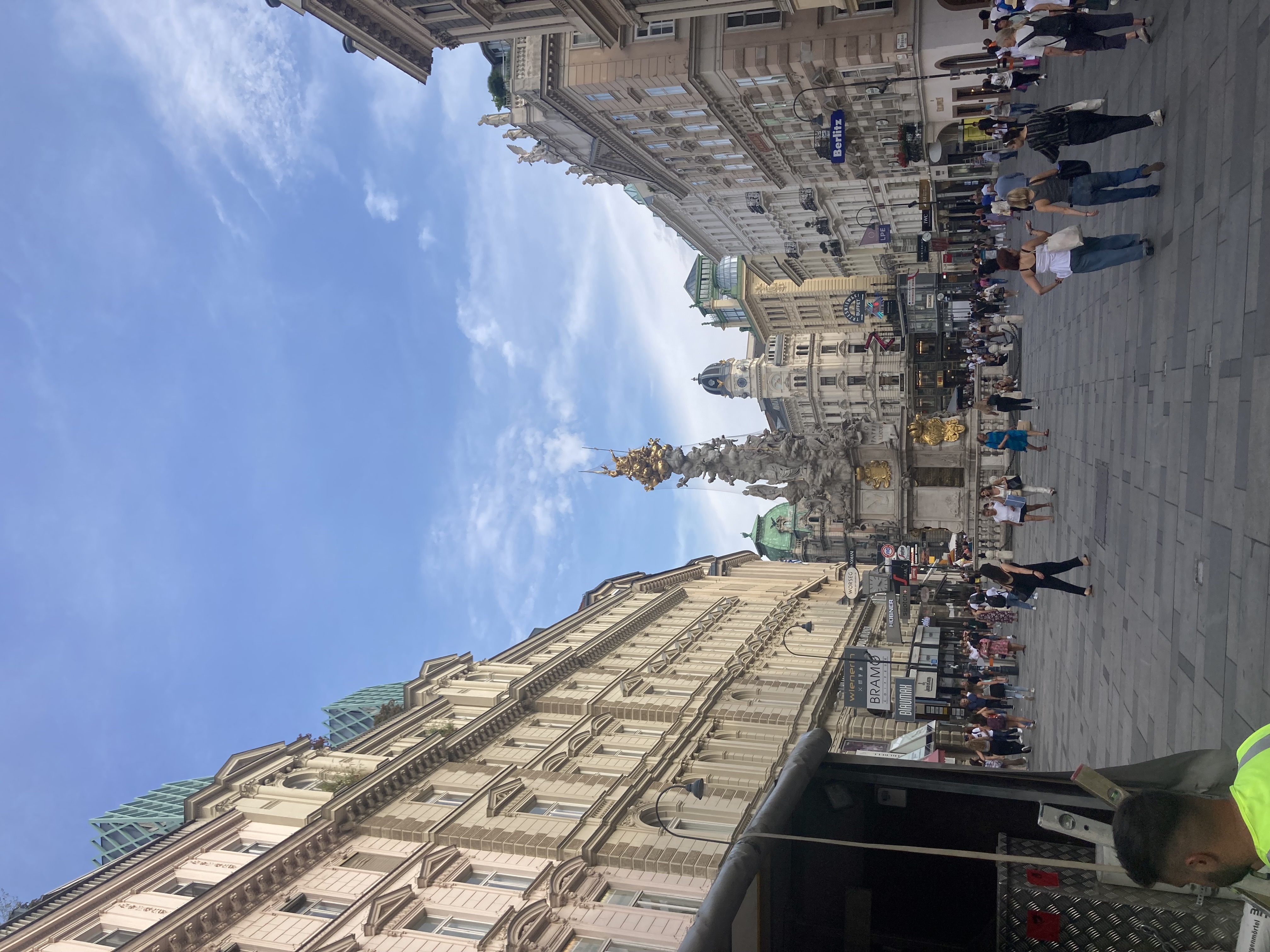
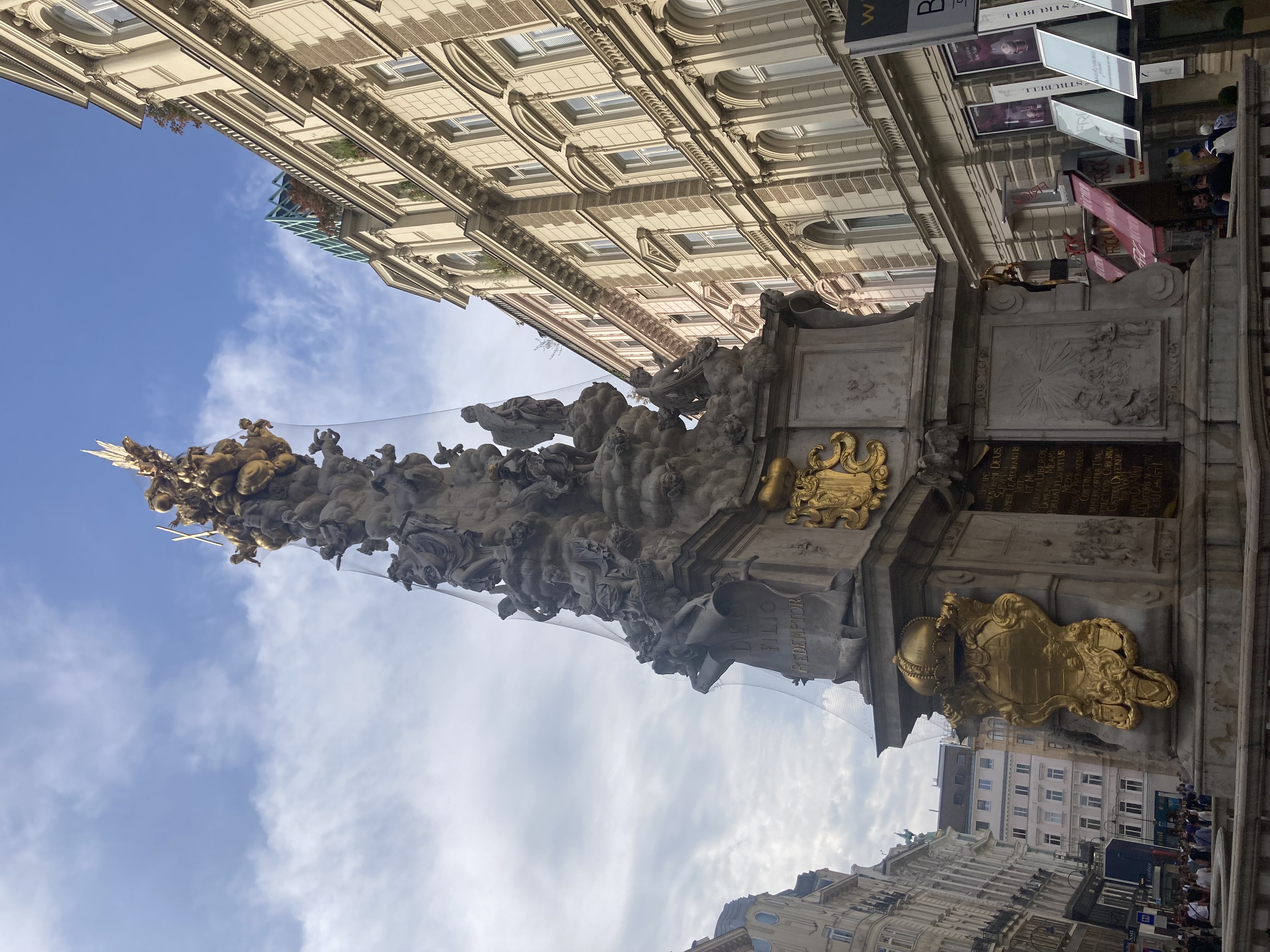
Right by the Wurstel Stand, Mike and
Bone saw and walked over after chowing the dogs and beers to check out the Pest or Plague Column, which is located on the Graben Street. Erected after the
Great Plague epidemic in 1679, the Baroque memorial is one of the best known and
most prominent sculptural artworks in the city. It was erected after Vienna
suffered one of the last great plague epidemics. Fleeing the city, the Habsburg
emperor Leopold I vowed to erect a mercy column if the epidemic would end.
The Trinity figure, the sculptor, Burnacini
envisioned a cloud pyramid with angel sculptures as well as the kneeling emperor
Leopold, praying to a sculpture of faith. It is a beautiful example of the money
the Hapsburg's would spend on Vienna!
More Statues and Iconic Streets!
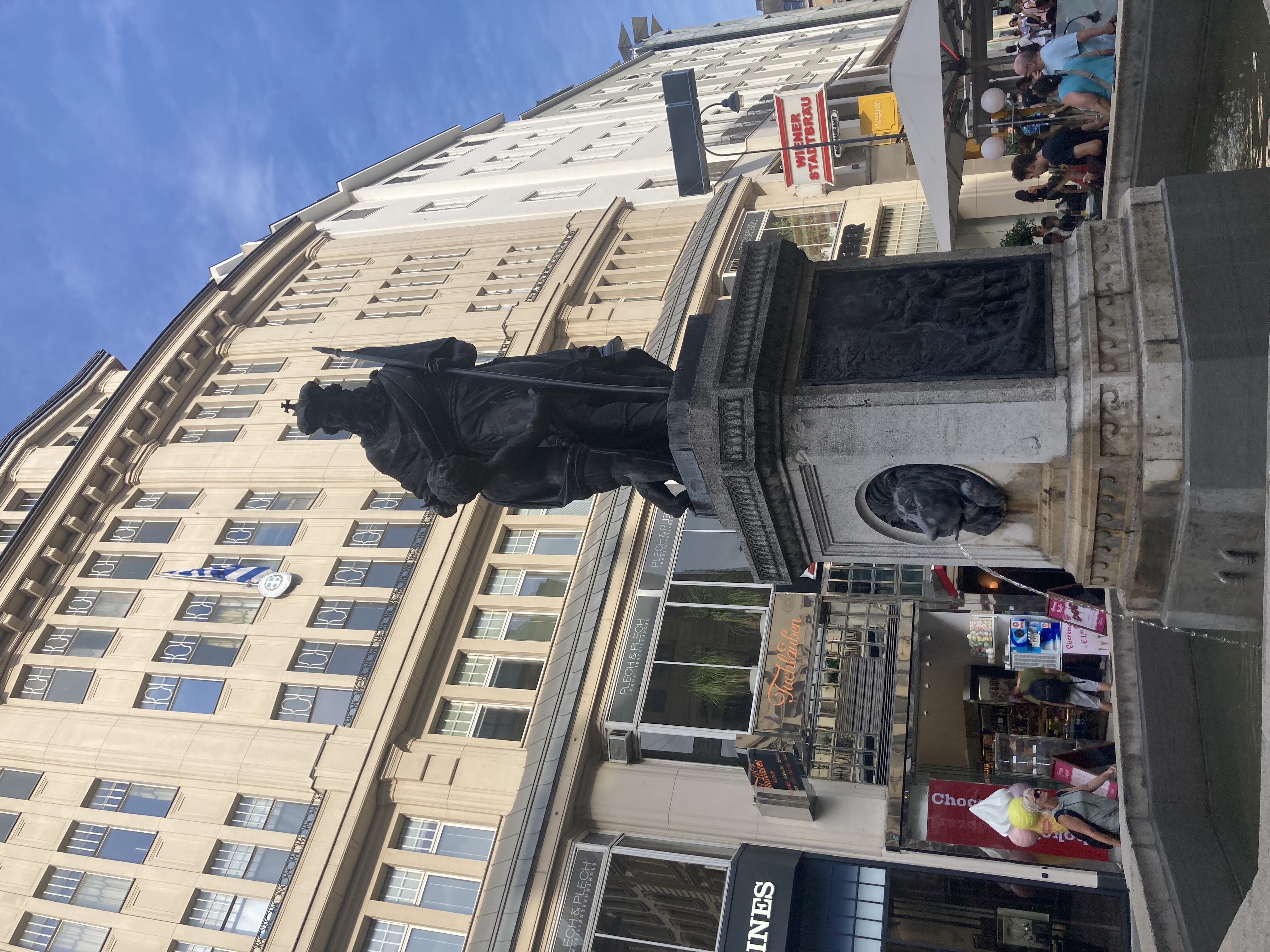
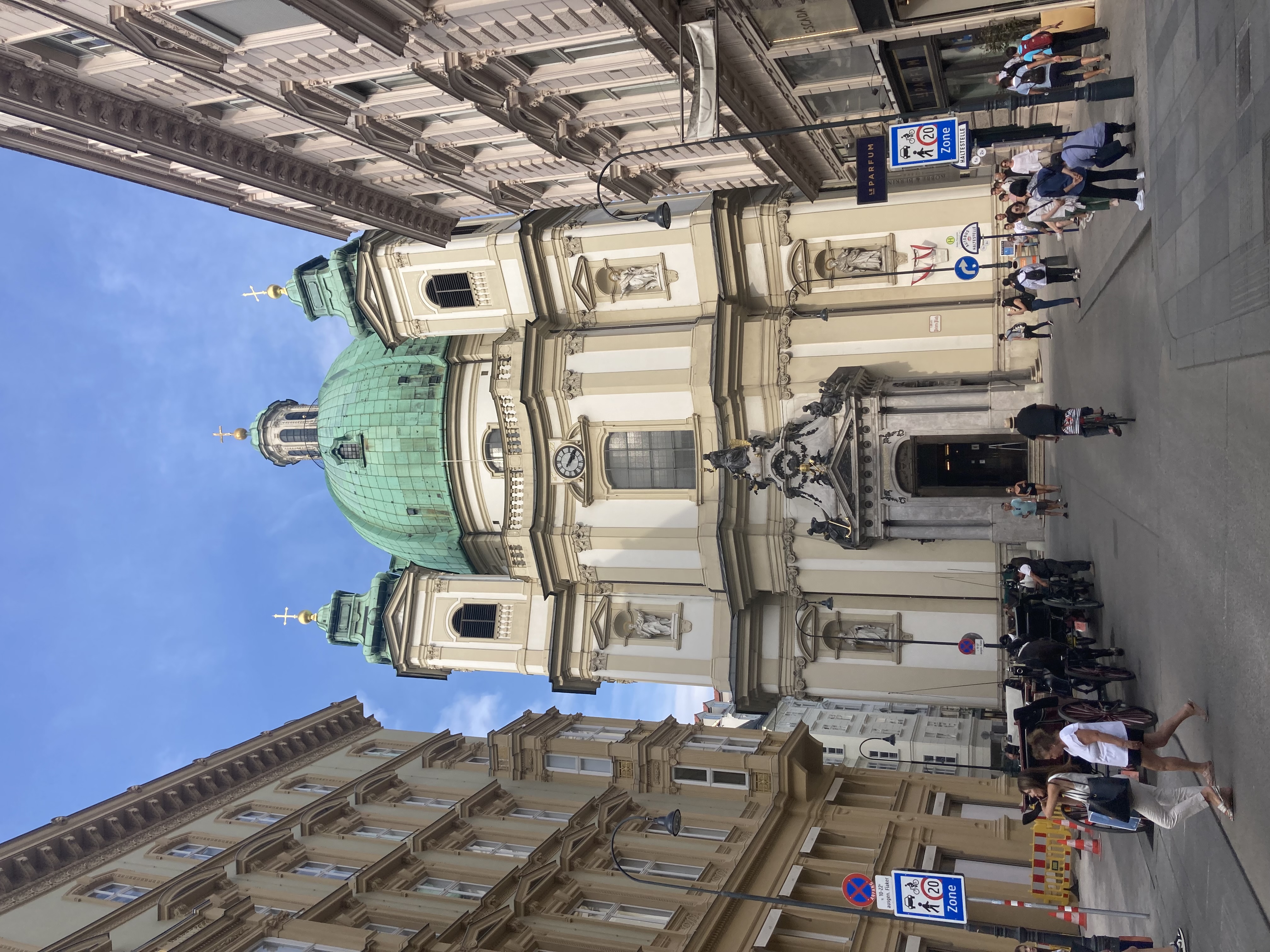
The Boys started walking around to
enjoy the splendor of central Vienna, Every street reflected the hundreds of
years of opulence that being the capital of the Hapsburg multi-generational
empire. Block after block of building in marble and gilded balconies kept the
Midwestern Boys slacked jawed.
A Former Hapsburg Palace (Now a Shopping Mall)


Mike and Bone next wandered in to
one of Vienna's best-known districts with wide pedestrian boulevards known
as Kärntner Strasse and Graben, where they strolled by the very famous Vienna
State Opera and the Habsburgs’ former Imperial Palaces which are both now
museums.
Mike and Bone in front of the Kaiser Franz Monument
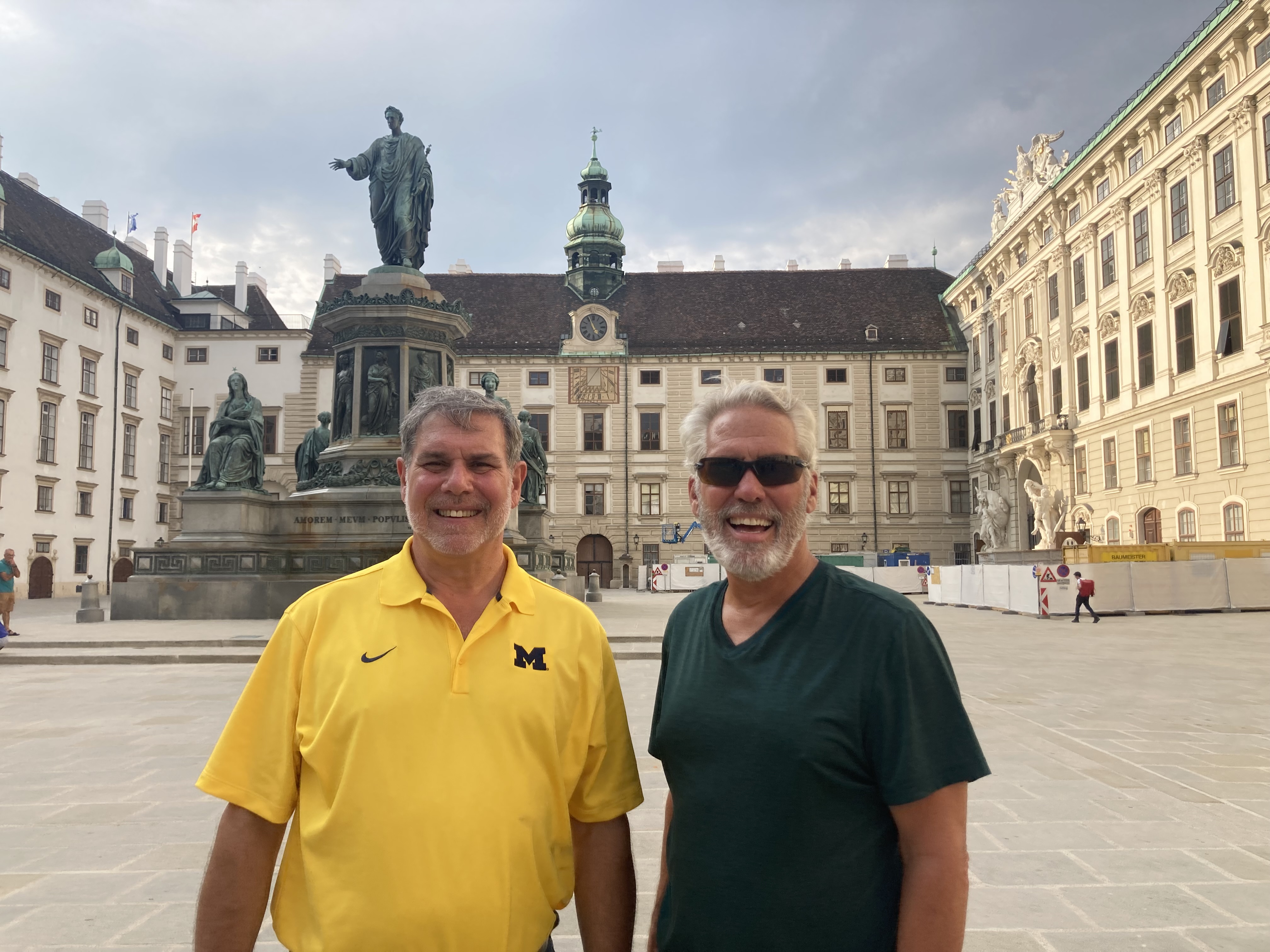
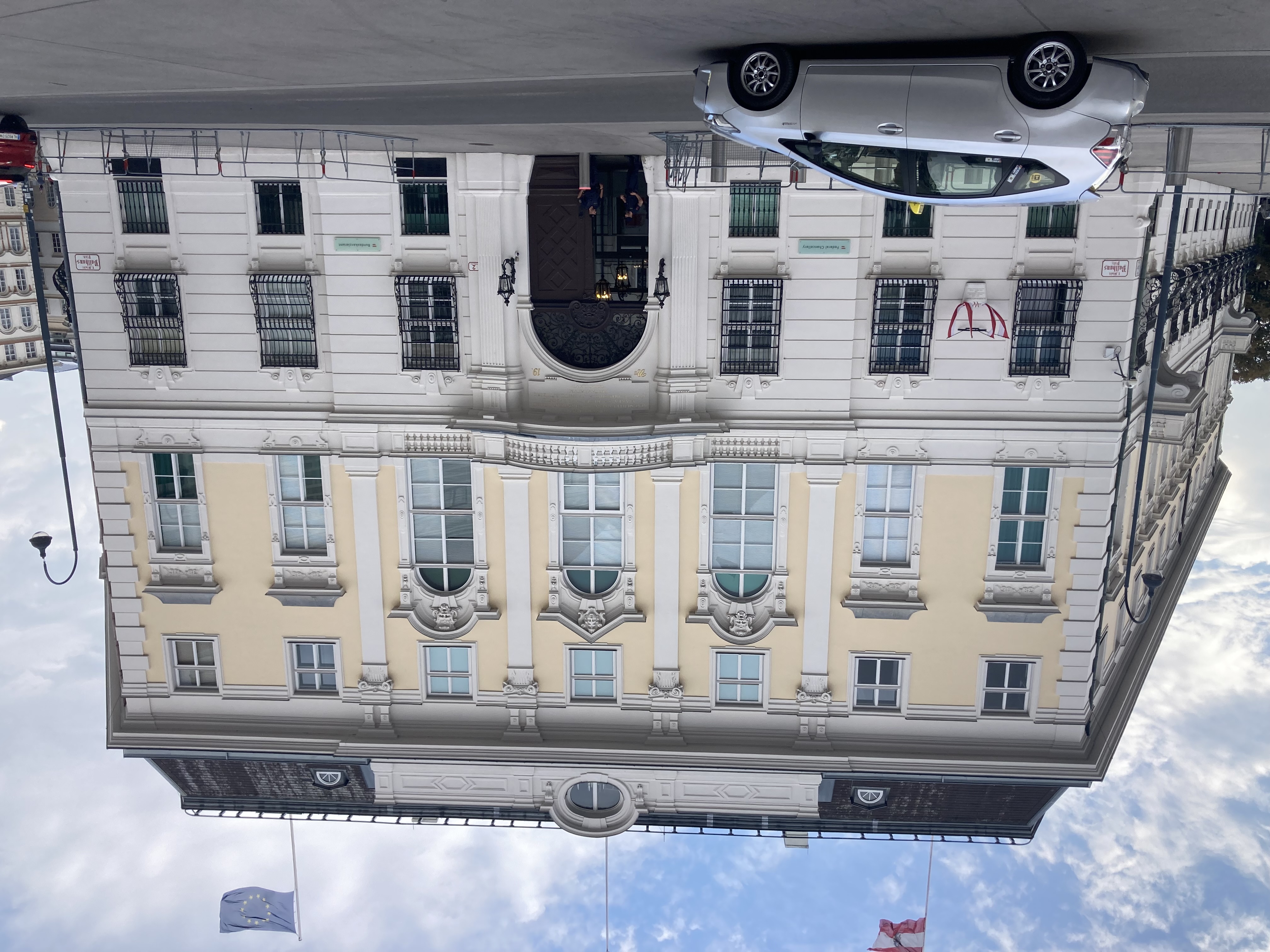
While Mike and Bone wandered through
the courtyards of the Hofburg palace, one major monument caught their: the 1846
statue of the man notable for being emperor of two entirely different empires!
Following the death of Leopold II in
1792, the position of Holy Roman Emperor was soon given to his son, Franz
(1768-1835). The young Habsburg monarch thus became Emperor Franz II.
It seems you can never have quite
enough empires, though. In 1804, Franz also established the Austrian Empire,
thus becoming its first emperor and assuming a second imperial title, Franz I.
Things got a little easier in 1806
when the Holy Roman Empire dissolved, allowing Emperor Franz II/I to become just
Emperor Franz I (saving everyone a lot of tedious explanations at cocktail
parties!)
Franz’s eventful reign included wars
with France, the seminal Congress of Vienna, and the Biedermeier cultural
phenomenon. After he died, his son and successor (Ferdinand I) decided to erect
a monument to his father.
The four female statues sit at
corners below Franz, representing faith, strength, justice and peace, and two
Latin inscriptions complete the work. The shorter inscription quotes part of
Franz’s will; Amorem meum populis meis means something like “my love for my
people(s)”. The longer one offers an effusive dedication to Franz and gives the
year of the monument’s completion. The Boys then headed toward the Austrian
Government Quarter.
Next, Mike and Bone came up to a
huge equestrian statue that dominates Heldenplatz square on one side of Vienna’s
Hofburg palace complex. This monument honors the first man to hand Napoleon a
significant military defeat: Archduke Karl.
Archduke Karl (1771-1847), third son
of Emperor Leopold II, brother of Emperor Franz II/I, and one-time resident in
the Albertina. Karl had a long career in the imperial army, but his name entered
global military folklore on May 22nd, 1809, when he presided over what is widely
considered to be the first military defeat of Napoleon in open battle at the
Battle of Aspern.
Honoring the Dude that Bested Napoleon: The Archduke Karl Monument
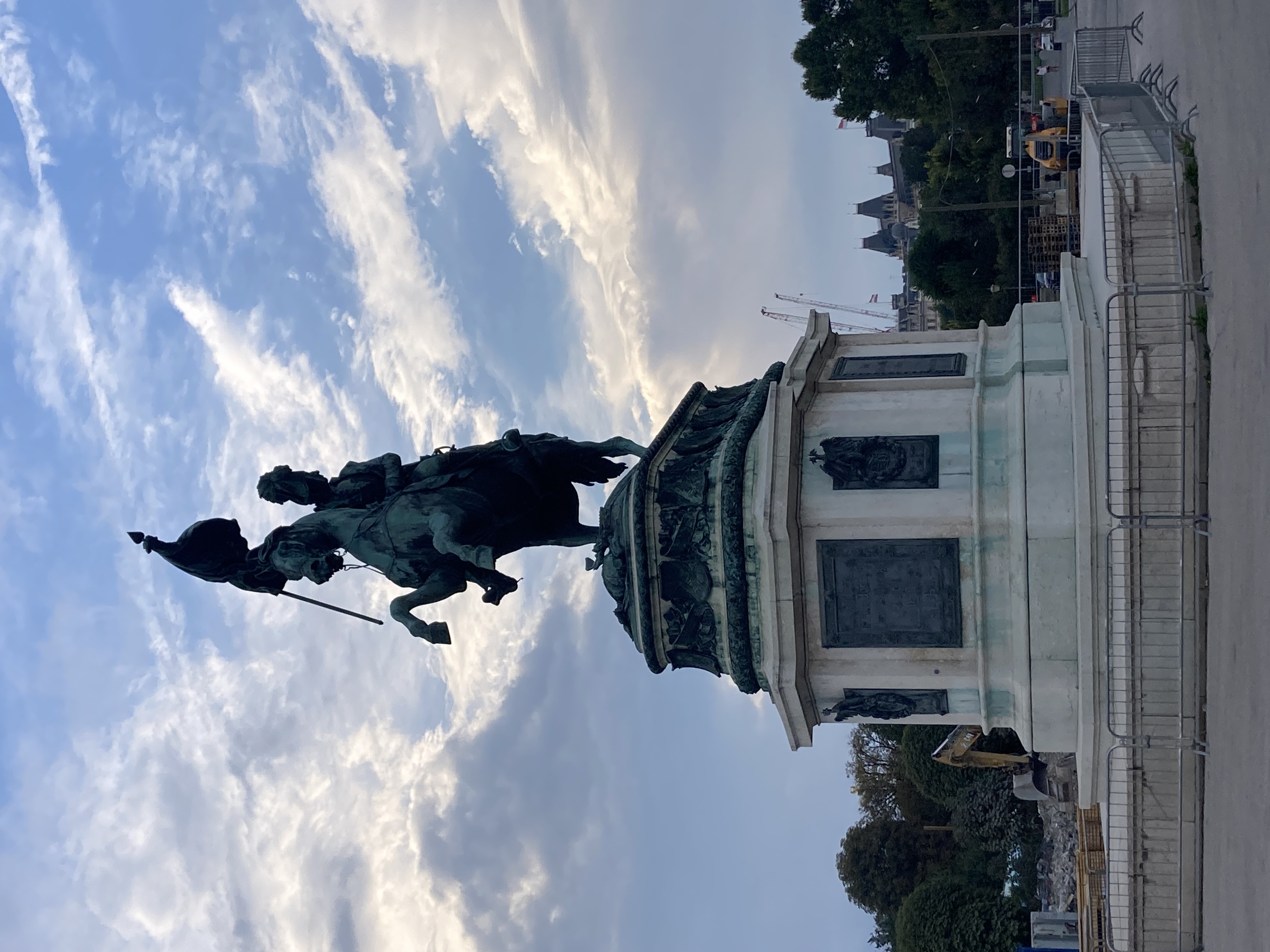
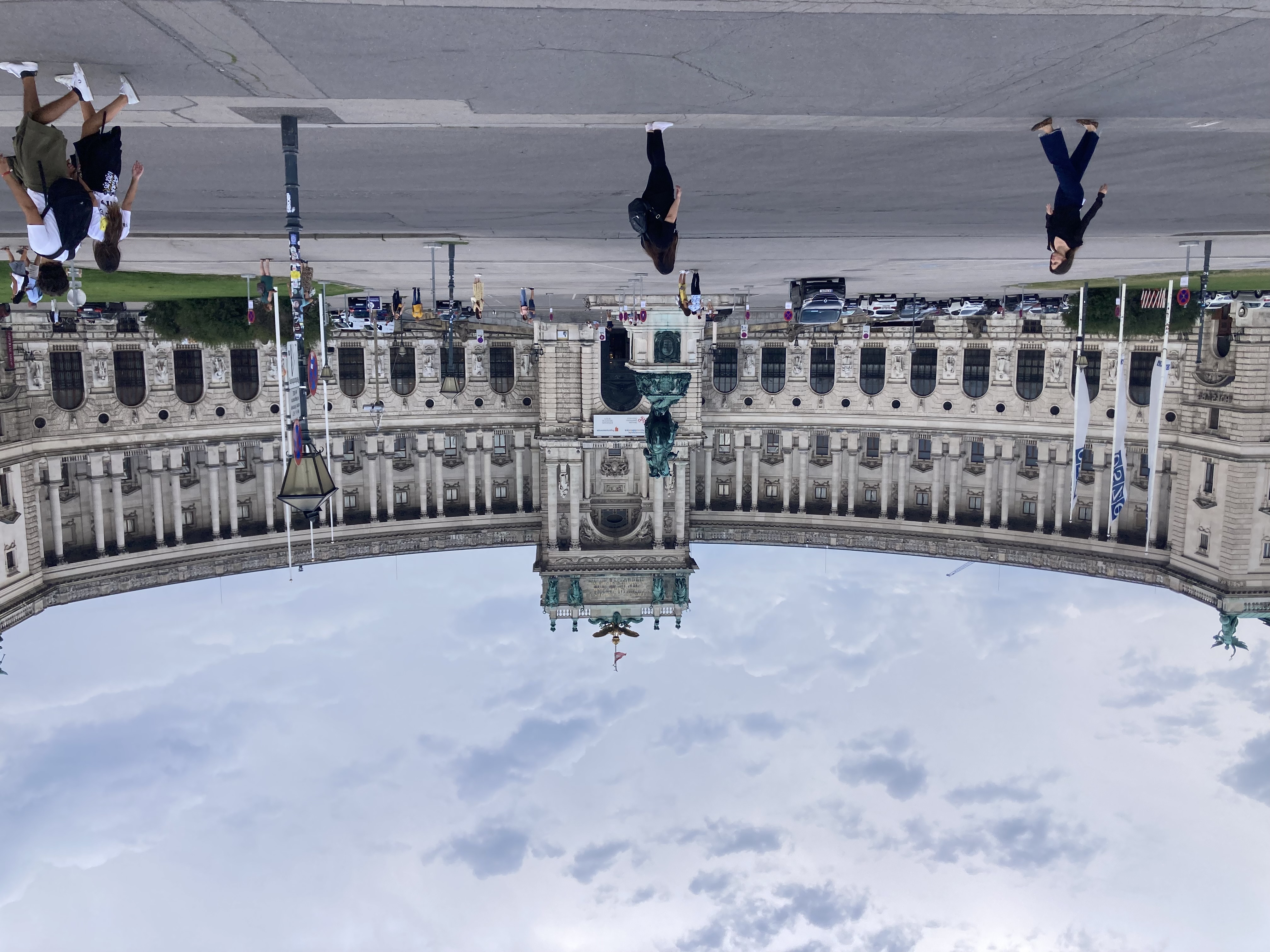
Mike and Bone now stood before the
monument that honors the very first man to hand Napoleon a significant military
defeat: Archduke Karl Habsburg!
Archduke Karl (1771-1847), third son
of Emperor Leopold II, brother of Emperor Franz II/I, had a long career in the
Austrian imperial army, but his name entered global military folklore on May
22nd, 1809, when he presided over what is widely considered to be the first
military defeat of Napoleon in open battle at the Battle of Aspern. Reason
enough for a monument in those days it seems. But the Boys saw that the
Austrians honored both sexes with the Maria Theresa Monument!
The
Madame Maria Theresa Monument


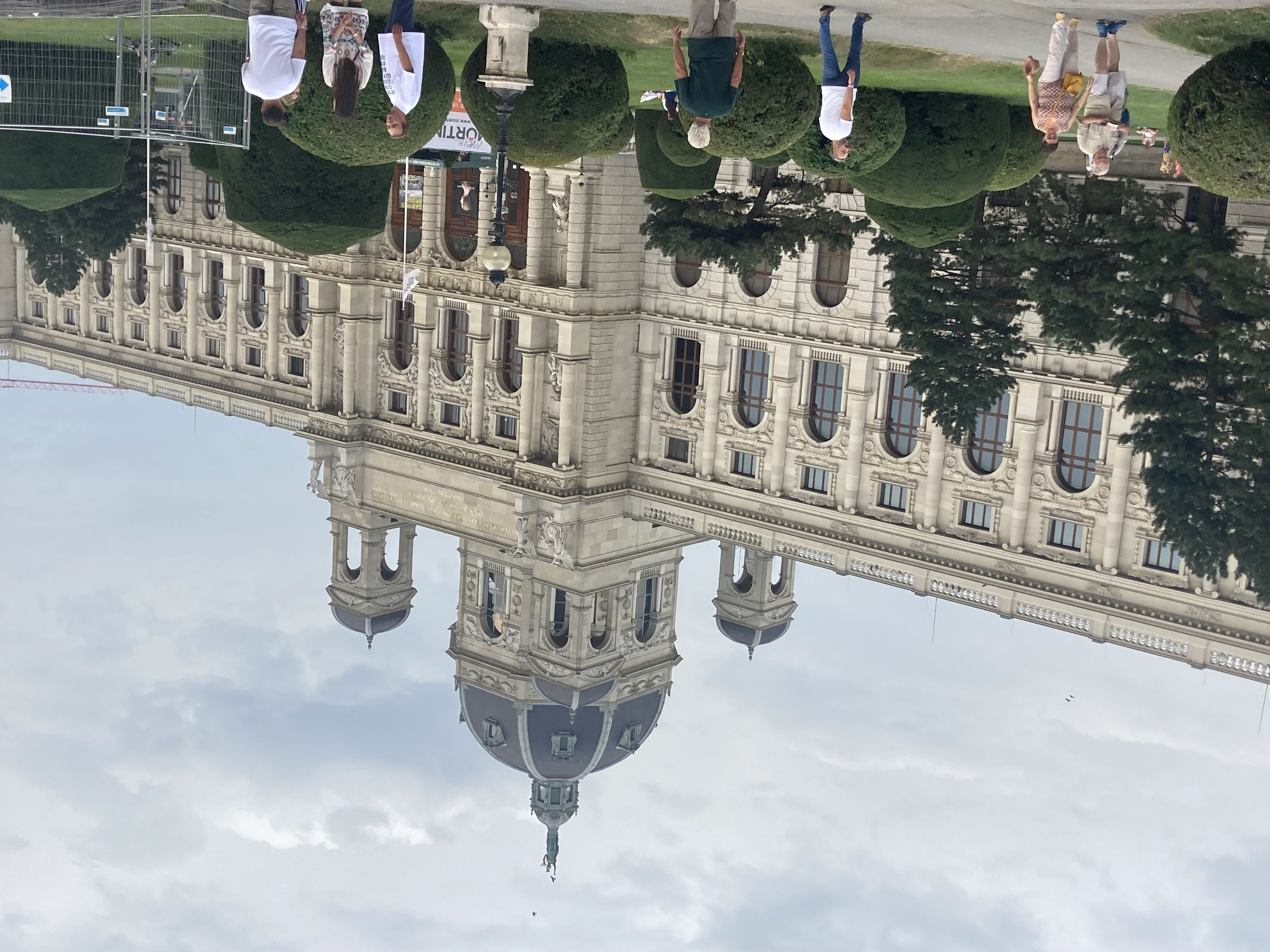

In the middle of those old Hapsburg
palaces that are now museums is the Maria Theresa Memorial, which is one of the
most important monuments of the Habsburg monarchy in Vienna. It commemorates
Empress Maria Theresa, who ruled the Habsburg monarchy from 1740 to 1780. The
monument has stood since 1888 on the Maria-Theresien-Platz between the Art
History Museum, which opened in 1891, and the Natural History Museum, which
opened in 1889. By now it was pushing 7:00 PM and the skies were getting dark
with rain, it was a good time to head back to the Apartment and grab dinner!
Viener Schnitzel and Beers for Mike and Bone !!

Right across the street from the
Apartment they rented, was a very non-touristy, classic Austrian Bistro! Mike
and Bone got a table outside and sat down for several delicious Edelweis beers
and classic viener schnitzel! As they finished their meals and beers the skies
opened up, a telltale sign to end the epic day around 9:00!



